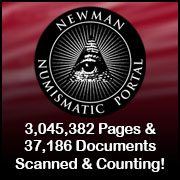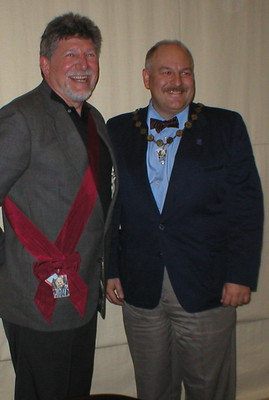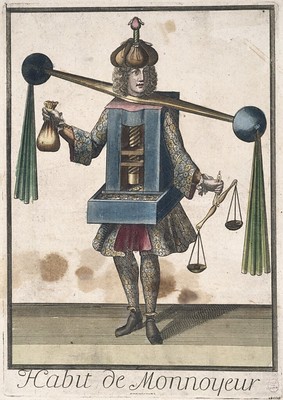
About UsThe Numismatic Bibliomania Society is a non-profit association devoted to the study and enjoyment of numismatic literature. For more information please see our web site at coinbooks.org SubscriptionsThose wishing to become new E-Sylum subscribers (or wishing to Unsubscribe) can go to the following web page link MembershipThere is a membership application available on the web site Membership Application To join, print the application and return it with your check to the address printed on the application. Print/Digital membership is $40 to addresses in the U.S., and $60 elsewhere. A digital-only membership is available for $25. For those without web access, write to: Charles Heck, Treasurer
AsylumFor Asylum mailing address changes and other membership questions, contact Chuck at this email address: treasurer@coinbooks.org SubmissionsTo submit items for publication in The E-Sylum, write to the Editor at this address: whomren@gmail.com BUY THE BOOK BEFORE THE COINSale CalendarWatch here for updates!
|
- WAYNE'S WORDS: THE E-SYLUM MARCH 25, 2020
- NEW BOOK: U.S. CLASSIC GOLD COINS OF 1834-1839
- NEW BOOK: CORPUS LUIGINORUM
- NEW BOOK: ANCIENT IRANIAN NUMISMATICS
- NEW BOOK: DUTCH EAST INDIES PLANTATION TOKENS
- NEW BOOK: NOT YOUR GRANDFATHER'S MEDALS
- NEW BOOK: GRESHAM'S LAW
- PERIODICAL: THE CENTINEL SPRING 2020
- BOOK REVIEW: IN GOD WE TRUST
- PACIFIC EXPO SO-CALLED DOLLARS BOOK OF THE YEAR
- OFFICIAL REGISTER OF THE UNITED STATES ON NNP
- VIDEO: STEWART BLAY'S INDIAN CENTS
- THE NUMISMATOURIST IS BACK HOME
- AUCTIONS IN A WORLD OF CORONAVIRUS
- CORONAVIRUS UPDATES: MARCH 22, 2020
- NOTES FROM E-SYLUM READERS: MARCH 22, 2020
- 1921 SILVER COIN ANNIVERSARY ACT SUPPORT SOUGHT
- JAMES MALONEBEACH: AMERICAN MEDAL OF THE YEAR
- VOCABULARY TERM: SUSPENSION
- DIME NOVELIST NED BUNTLINE
- EBENEZER LOCKE MASON, JR. (1826-1901)
- NUMISMATIST OF THE YEAR MARK BORCKARDT
- WHAT ARE ELECTROTYPES?
- HERITAGE 2020 CENTRAL STATES SALE SELECTIONS
- SLOVAKIA VILLAGE CHURCH COIN FIND
- GRAND DUCAL SAXON MONEY ORDER
- NEW YORK RESTAURANTS OFFER BONDS
- READERS RUSH THEIR LIBRARIES FOR BOOKS
- LOOSE CHANGE: MARCH 22, 2020
- 1666 JOHN MORSE COPPER HALFPENNY TOKEN
- LARRY BRILLIANT, NUMISMATIC INTERNET PIONEER
Click here to access the complete archive
To comment or submit articles, reply to whomren@gmail.com
Content presented in The E-Sylum is not necessarily researched or independently fact-checked, and views expressed do not necessarily represent those of the Numismatic Bibliomania Society.
WAYNE'S WORDS: THE E-SYLUM MARCH 25, 2020
 This week we open with SIX new books, a periodical that doesn't exist, a book review, and updates from the Newman Numismatic Portal.
This week we open with SIX new books, a periodical that doesn't exist, a book review, and updates from the Newman Numismatic Portal.
Other topics this week include Indian and Flying Eagle cents, So-Called Dollars, the 1921 Silver Coin Anniversary Act, the Numismatist of the Year, the American Medal of the Year, coin dealer Ebenezer Locke Mason, Jr. and his friend Ned Buntline, and epidemiologist and numismatic internet pioneer Larry Brilliant.
To learn more about U.S. Classic Gold Coins of 1834-1839, luigini coinage, ancient Iranian numismatics, Dutch plantation tokens, Gresham's Law, Mint clerk Samuel W. Brown, the Numismatourist, coin auctions in a world of coronavirus, and the magazine that never was, read on. Have a great week, everyone. Stay safe!
Wayne Homren
Editor, The E-Sylum
NEW BOOK: U.S. CLASSIC GOLD COINS OF 1834-1839
Quick - which series of U.S. coins does NOT already have a book dedicated to it? That used to be a hard question, even for dedicated bibliophiles. Hasn't Dave Bowers written something on everything? Not quite. One short but important and no-longer-overlooked series now has its reference book. Here's the press release. -Editor
United States Classic Gold Coins of 1834-1839
 "Buy the book before the coin." Sage advice if there is a book to buy. Every coin series in U.S. history has a book dedicated to it except one, Classic Gold. Minted from 1834 to 1839 and falling between the series of the old standard preceding it and the newer series that followed, Classic Gold quarter eagles and half eagles are betwixt and between. No comprehensive and authoritative reference guide has been written about these beautifully designed coins. Their story has never been told, until now.
"Buy the book before the coin." Sage advice if there is a book to buy. Every coin series in U.S. history has a book dedicated to it except one, Classic Gold. Minted from 1834 to 1839 and falling between the series of the old standard preceding it and the newer series that followed, Classic Gold quarter eagles and half eagles are betwixt and between. No comprehensive and authoritative reference guide has been written about these beautifully designed coins. Their story has never been told, until now.
United States Classic Gold Coins of 1834-1839, a book written by Daryl J. Haynor, presents information about every aspect of the Classic Gold quarter eagle and half eagle series that a collector needs to knowledgeably and confidently collect them. The work assembles for the first time a complete die marriage listing for every date in each series, emission sequencing, and a detailed system for identifying marriages with high quality color photographs. Rarity ratings of each die marriage are given, backed by an exhaustive search of thousands of records of gold coin sales.
The book includes an analysis of the characteristics of Classic Gold coins by date, including luster, color, strike, and other die characteristics. It provides estimates of the survivors of each date broken down by grade ranges based on statistical analysis of third- party population reports and auctions. It also documents reasons why several official mintage figures of the U.S. Mint need to be adjusted.
Mr. Haynor has conducted an exhaustive study of the finest examples of each date, and a condition census list with detailed provenance records is included. In many cases this information will be published for the first time. Most listings include high quality color photos.
But Classic Gold is much more than a reference book. The 1830's was perhaps the most dynamic decade in the history of the U.S. Mint, and economically one the most traumatic for the country. The book explores the economic and political context of the 1830's by "following the money" through these turbulent times, including President Jackson's push for a bimetallic monetary system, the Second Bank Wars and its ultimate demise, and changing the gold standard. It chronicles the role of the gold in French indemnity payments, the relocation of Native Americans, and the Panic of 1837. And it explores U.S. Mint operations which went through big changes during that decade, including the introduction of the steam toggle press, the opening of the new Philadelphia Mint, Christian Gobrecht's arrival as Engraver, and the construction of branch mints in Charlotte, Dahlonega, and New Orleans.
Classic Gold coinage was the tool Jackson used to implement his financial policy based on specie. It was the first coinage under a new gold standard, the first to create a public uproar over the omission of E PLURIBUS UNUM on U.S. coinage, the first coinage struck at the Branch Mints, and the first U.S coinage with a mintmark on the obverse.
The historic section of the book is based on hundreds of hours of research involving documents probably never read by anyone with a numismatic interest for two hundred years. The book includes facsimiles of many exciting and never before published archival documents such as a new allegorical drawing by Engraver William Kneass of Miss Liberty, a letter from President Andrew Jackson accepting the first Classic Head gold coin minted, and Gold Bullion Mint Certificate No. 1 issued by the Charlotte Mint on the first day of operations.
Classic Gold includes many other documents for the first time, including those surrounding the striking of rare Proof Classic Gold coins. The book includes an analysis of these coins, detailing their provenance and telling stories of some of their most famous collectors, featuring the King of Siam Presentation Set which is perhaps the most famous and most valuable set of U.S. coinage ever assembled.
The book will debunk some widely accepted tales of numismatic history that are not accurate, but are "numislore", that: old tenor gold was melted in masses by the U.S. Mint as a result of changing the gold standard in 1834; E PLURIBUS UNUM was removed, as well as the cap from Miss Liberty, in order to distinguish the change in weight of U.S. gold coins; in 1835 Christian Gobrecht took over all activities as engraver after the debilitating illness of William Kneass.
This work contains valuable materials gathered by John McCloskey, respected author of works on other coin series, whose ground-breaking articles about Classic Gold aroused Mr. Haynor's interest. Mr. McCloskey researched Classic Gold for over twenty years. He discovered and reported new die marriages, and many had been eagerly awaiting his book. Unfortunately, Mr. McCloskey passed away in 2018, but his family has generously turned his materials over to Mr. Haynor. His seminal research will be acknowledged and memorialized through the naming regime of die marriages detailed in the book.
Professional Coin Grading Services (PCGS) and the Numismatic Guaranty Corporation (NGC) have adopted the HM (Haynor-McCloskey) attribution system and will attribute Classic Gold coins submitted through their services. Stack's Bowers and Heritage Auctions now attribute their auction listings using the HM system.
Mr. Haynor has been an avid collector for decades. He has compiled a collection of Classic Gold that is the finest ever known, and is near completion of the first ever collection to include every die marriage in both series. He would have found a book like this one invaluable, but none existed. Instead he was compelled to undertake a rewarding but at times arduous research over twelve years into all aspects of Classic Gold. He is now prepared to pass on this knowledge in one comprehensive work so that collectors finally will be able to "buy the book before the coin."
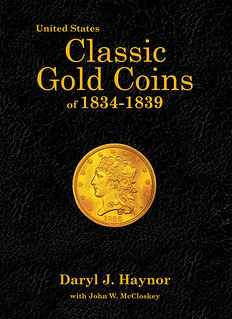 The hardbound book is 368 pages in length, printed in full color with over 700 full color high- resolution illustrations. United States Classic Gold Coins of 1834-1839 by Daryl J. Haynor, with John W. McCloskey, is available from Wizard Coin Supply at Wizardcoinsupply.com. The book is priced at $95, but is now available for a limited time at a discounted pre-release price.
The hardbound book is 368 pages in length, printed in full color with over 700 full color high- resolution illustrations. United States Classic Gold Coins of 1834-1839 by Daryl J. Haynor, with John W. McCloskey, is available from Wizard Coin Supply at Wizardcoinsupply.com. The book is priced at $95, but is now available for a limited time at a discounted pre-release price.
A limited-edition ?leatherette version of only 75 copies (shown at left) is priced at $195 but also available at a pre-release price.
For more information, or to order, see:
United States Classic Gold Coins of 1834-1839 (https://www.wizardcoinsupply.com/united-states-classic-gold-coins-of-1834-1839)
NEW BOOK: CORPUS LUIGINORUM
Editions Victor Gadoury of Monaco has published a new book by Maurice Cammarano on the luigini coinage. -Editor
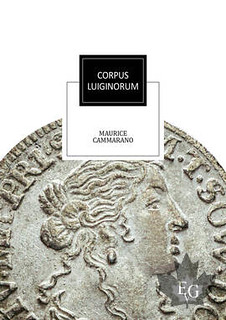 • Title: Corpus Luiginorum
• Title: Corpus Luiginorum
• Author: Maurice Cammarano
• Publisher: Editions Victor Gadoury
• Year: 2020
• Language: Italian
• Price: € 29.00
Description in French:
"Le Corpus Luiginorum est l'ouvrage de Maurice Cammarano un grand collectionneur de luigini. Ce livre en italien de 240 pages, illustré par de nombreuses photographies en couleur de monnaies et de détails, mais aussi de dessins, d'archives, de notes historique à propos des monnaies et d'arbres généalogiques, est incontournable pour tout collectionneur de Luigini. Il y trouvera toutes les villes ayant frappé ce type de monnaies ainsi que les différentes variétés de pièces."
Google translation to English
"The Corpus Luiginorum is the work of Maurice Cammarano, a great collector of luigini. This 240-page Italian book, illustrated with numerous color photographs of coins and details, as well as drawings, archives, historical notes on coins and family trees, is a must for any Luigini collector. . He will find there all the cities having struck this type of currencies as well as the various varieties of coins."
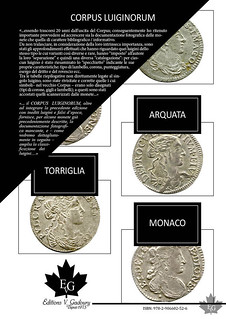
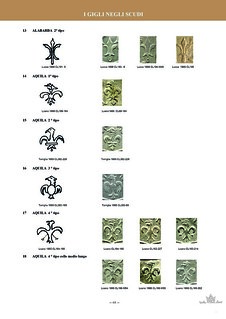
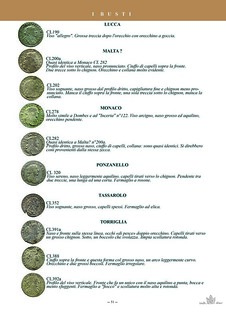
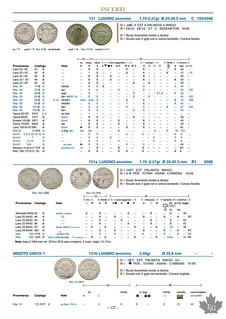
For more information, or to order, see:
Corpus Luiginorum (https://www.gadoury.com/en/books/corpus-luiginorum-2)
We discussed modern versions of luigini coins in 2016 with excerpts from articles in the Wall Street Journal and World Coin News. I pieced together this summary, but see the complete article online in our E-Sylum archive. -Editor
"The Seborga Mint actually dates to 1666 when gold and silver luigini denominated coins were struck by Prince-Abbot Edward. In more recent history, coins were issued between 1995 and perhaps 1996
"Seborga is a principality landlocked inside Italy that unlike San Marino and Vatican City, is often overlooked by coin collectors.
"According to the January issue of Hemispheres magazine, "You can also try to dig up a few rare luigini, the local currency, to pay for your expresso. (Stores in town accept luigini alongside the euro, but because 1 luigino equals 4.285 euros, making change can be a complicated procedure.)"
To read the complete article, see:
THE COINS OF SEBORGA (https://www.coinbooks.org/esylum_v19n28a30.html)
NEW BOOK: ANCIENT IRANIAN NUMISMATICS
A new festschrift of essays on ancient Iranian numismatics has been published in memory of David Sellwood, author of Introduction to the Coinage of Parthia. It is published by Jordan Center for Persian Studies at the University of California in Irvine (UCI). -Editor
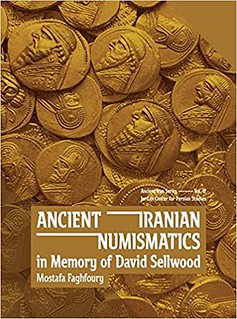 Ancient Iranian Numismatics: In Memory of David Sellwood
Ancient Iranian Numismatics: In Memory of David Sellwood
Editor: Mostafa Faghfoury
ISBN: 978-1-949743-16-6
Hardcover – March 20, 2020
The present volume which includes some of the most recent studies on ancient Iranian numismatics has been dedicated to the memory of David Sellwood (1925-2012). Sellwood spent more than fifty years of his life studying and publishing about the history and coinage of Iran. His legacy is exhibited in this volume through the contributions of individuals from different backgrounds and countries who have participated to make this book possible. He would have been pleased to see that not only his old friends remember him, but also that some young scholars, who were not even born when the first edition of his Introduction to the Coinage of Parthia was published in 1971, are now working in the areas of his interests.
TABLE OF CONTENTS
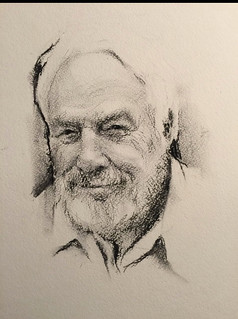 • Preface
• Preface
• Sellwood's Biography
• Sellwood's Bibliography
• Tributes
• About Authors
• The Heavy Bronzes of Antiochus III and Demetrius I of Bactria – K. Rutter and S. Glenn
• The Date of the Battle at the River Lycus: Antiochus VII Defeated the Parthian General Indates on Friday 12 June 130 BC – G.R.F. Assar
• Introducing a forthcoming book: Volume 2: Mithradates II c.122/121–91 BC. The Sylloge Nummorum Parthicorum (SNP) – V. Sarkhosh-Curtis, A. Magub and E. Pendleton
• The Gold Variety of a Silver Drachm of Mithradates III of Parthia (87-80 BC) – G. R. F. Assar
• Some Observations on Parthian Bronze Coinage – M. Faghfoury
• Onomastica Persida: Names of the Rulers of Persis in the Seleucid and Arsacid Periods – Kh. Rezakhani
• A Revised Frataraka Chronology and Coinage – K. Gholami
• Sasanian Coins from Amul, Tabaristan – H. M. Malek
• "The Maker of the World Without Fear": Observations on the Gold Coin of Khosrow I – T. Daryaee
• An Anomalous Group of Khusrau II Drachms – S. Tyler-Smith
• Cities and Mint Centers Founded by the Sasanians – B. Badiyi
• Leiden Conventions for Greek Numismatic Epigraphy – E. C. D. Hopkins
For more information, or to order, see:
Ancient Iranian Numismatics: In Memory of David Sellwood (https://www.amazon.com/Ancient-Iranian-Numismatics-Memory-Sellwood/dp/1949743160/ref=mp_s_a_1_1)
NEW BOOK: DUTCH EAST INDIES PLANTATION TOKENS
The 4th edition of Ad Lansen's book on plantation tokens of the Dutch East Indies has been published. -Editor
PLANTATION TOKENS OF THE DUTCH EAST INDIES
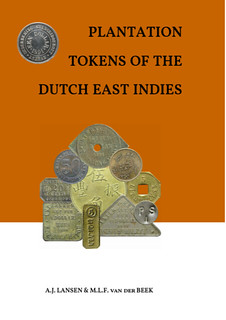 Plantation Tokens of the Dutch East Indes
Plantation Tokens of the Dutch East Indes
4th Edition
393 Numbers
179 Pages
Hard Bound copy - Format A4
PRICE : 32,50 Euro, postage excluded.
In the third edition September 2018 are 354 tokens listed, in this new revised edition are 393 numbers mentioned with 21 new described tokens. A new, recent, astonishing, discovery was that the LaBe number 87 : Goerach Batoe One dollar Reis1890 a modern forgery is, made in the United Kingdom.
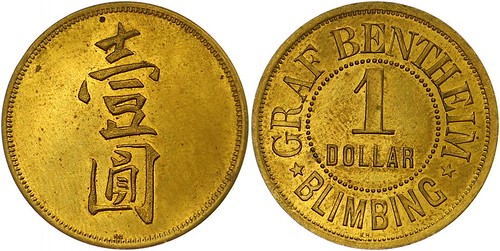
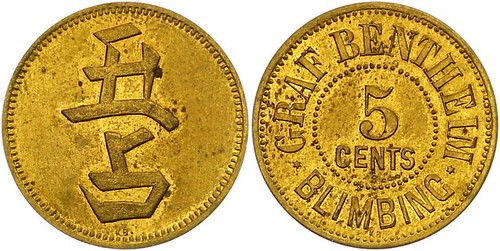
Some new discoveries, who were reported but not confirmed, are from the Blimbing Estate in Batoe Bahra, Sumatra: one Dollar brass, fifty cents brass, ten cents and five cents brass.
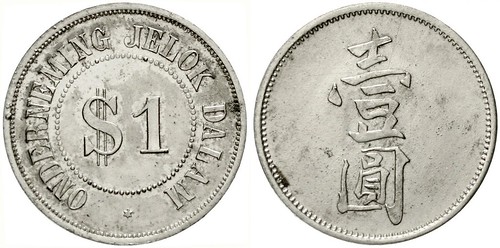
Jelok Dalam Estate, in Asahan, Sumatra, reported and now confirmed: one Dollar german silver coated zinc, R4: extremely rare and the 10 cents referred as coated zinc is changed in 10 cents in copper coated zinc.
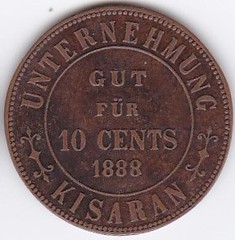
A new Unternehmung Kisaran ten cents copper 1888 and one Dollar Reis 1888, both in copper, are discovered.
From the Simpang Tiga Estate, in Asahan, named "Kedeh China Onderneming" new tokens: 10 cents brass with reeded edge and five cents copper, reported and now confirmed. From the same Estate, tokens in the name of "Malay Kedeh", two new numbers: five cents brass, now confirmed, and a five cents copper : a new discovery.
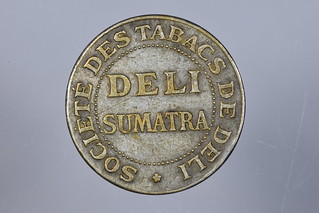
Societé des Tabacs de Deli, fresh from a Chinese friend in Shanghai: five cents brass, R4: extremely rare.
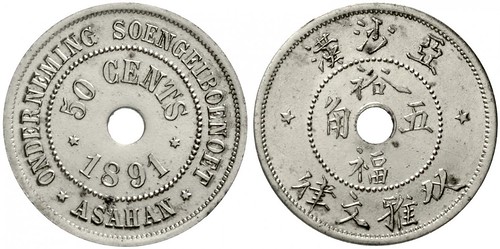
The Soengei Boenoet Estate in Asahan : reported, not confirmed, but now confirmed: fifty cents made of german silver coated zinc, R4: extremely rare.
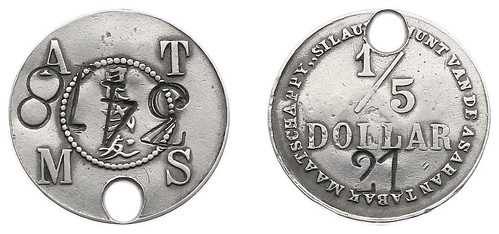
In this new revised edition is also a lot of new information gathered about counterstamped tokens with numbers and drilled holes on the rim. For example the Asahan Tobacco Company Silau tokens in the value of half and one fifth of a dollar. A few other examples are the one dollar, 50 and twenty cents of the Dolok Estate. Also new information about a lot of presentation pieces, sometimes announced as proof items.
To find some new additions as collector of these tokens there are some interesting auctions houses who are frequently coming up with these Dutch plantation tokens, for example: Stephen Album Rare Coins in Santa Rosa USA; Teutoburger Munzauktion in Borgholzhausen, Germany and the MPO/Heritage Auction in IJsselstein, The Netherlands.
ORDER BY E.MAIL :
a.j.lansen@hccnet.nl or
lansenkil@hotmail.nl or
ajlansen@caiway.nl
PAYMENT BY : bank account or by PayPal.
Or by Post :
A.J. Lansen
Haanderik 94 3401 ET
IJsselstein
The Netherlands.
NEW BOOK: NOT YOUR GRANDFATHER'S MEDALS
George Cuhaj passed along this announcement of a new book about the unique medals of artist James MaloneBeach. Thanks! -Editor
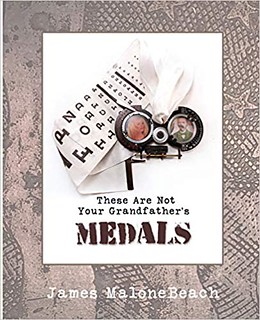 These Are Not Your Grandfather's Medals
These Are Not Your Grandfather's Medals
James MaloneBeach
Polymarket Press
(C) 2020
ISBN 978-0-9800312-3-2
ISBN 9-780980-031232
7-1/2 x 9-1/4 131 Numbered pages.
James MaloneBeach has been at the cutting edge of expanding the bounds of what "traditionalists" would think of as a "medal."
He honed his craft creating containers as a graduate student in medalsmithing at Iowa State, in daily life he taught high school art in Minnesota, Alabama and Michigan.
For the past thirty-five years he has created art of a very personal nature. Everything has a back story. Memories of his grandmother, father, children, teaching in Alabama, an automobile accident. Love, friendships, place, death, politics.
The book is in his voice, in his speaking cadence as if seated across a breakfast table passing these beautiful items over to you to share; then you turn the page and you are handed another medal to admire and learn about.
His medals are constructed, often from found objects and then mixed with ribbons or other media, sometimes acid etched with wording, and finally brought together into a very personal item.
Beach (he uses that form except with documents) was one of the first Americans to win an award at a FIDEM exhibition (Budapest 1994) In 2020 he has been selected as the winner of the American Medal of the Year award by the American Medallic Sculpture Association.
"Disclaimer: I am a bit biased on this subject, I have commissioned Beach on a series of "decorations" and "awards" which have been distributed for over twenty years."
Shown here are author James MaloneBeach (with a sash) and George Cuhaj (Grand Collar) Cuhaj Award of Distinction. Photo courtesy George Cuhaj. -Editor
For more information, or to order, see your favorite online bookseller. Here are a few options:
https://www.amazon.com/These-Are-Your-Grandfathers-Medals/dp/0980031230
ttps://www.barnesandnoble.com/w/these-are-not-your-grandfathers-medals-james-malonebeach/1136135418
https://www.ebay.com/itm/These-Are-Not-Your-Grandfathers-Medals-Paperback-or-Softback-/383394761084
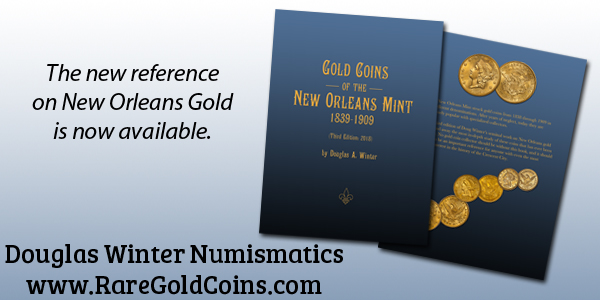
NEW BOOK: GRESHAM'S LAW
A review in the weekend Wall Street Journal by James Grant alerted me to a book by John Guy published in 2019 on Sir Thomas Gresham of 'Gresham's Law" fame. Here's an excerpt. -Editor
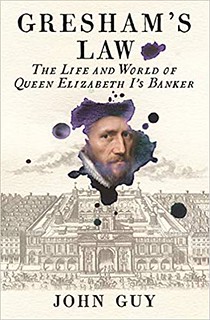 Sir Thomas Gresham, it turns out, didn't say: "Bad money drives out good money." But he did live by those wise words. What the adage, so often credited to him, means is this: If you have two coins of equal legal value, one of them worn and debased and the other mint-fresh, you'll save the new one and spend the old one. Bad money drives good money out of circulation and into safe-deposit boxes, a fundamental truth worth remembering even if your bank account consists of nothing but digital ones and zeros.
Sir Thomas Gresham, it turns out, didn't say: "Bad money drives out good money." But he did live by those wise words. What the adage, so often credited to him, means is this: If you have two coins of equal legal value, one of them worn and debased and the other mint-fresh, you'll save the new one and spend the old one. Bad money drives good money out of circulation and into safe-deposit boxes, a fundamental truth worth remembering even if your bank account consists of nothing but digital ones and zeros.
Gresham, by rehabilitating the English coinage of the 1550s and preaching fiscal probity to sovereigns who didn't want to hear it, was a kind of Elizabethan Paul V, though he was a councilor just as interested in his own net worth as he was in that of his royal patrons. John Guy's fine and learned biography, "Gresham's Law," reminds us how much has changed about finance in 500 years. For instance, nowadays, rather than raising funds by pillaging monasteries or shaking down defenseless merchants, governments sell bonds.
Then again, much remains the same in the very human business of lending and borrowing. The brilliant, corner-cutting, high-living, cold-blooded titan who lives and breathes between the covers of this concise volume would not be out of place in a sit-down interview on CNBC.
Gresham's story, in Mr. Guy's expert hands (the author is a historian of Tudor England at the University of Cambridge), is the chronicle of the stirrings of modern finance in a time of religious and political upheaval. As Catholics faced off against Protestants and contending descendants of Henry VIII fought for the English crown, Gresham effected a quiet revolution of his own. Not until he began to keep his ledger in the format of debits and credits had any Briton known to Mr. Guy employed the Italian innovation of double-entry bookkeeping.
The son of Richard Gresham, a textile merchant and "one of the most hated men in London" (a reputation burnished by the eviction of a widow from a house on which Gresham held a mortgage), Thomas was apprenticed to the family business and proceeded to make an independent career as banker to a succession of English sovereigns. For Elizabeth I, whom he served longest, he floated loans, manipulated foreign exchange rates, conducted espionage, dealt in armaments and acted as a kind of personal shopper. He served the queen well enough so that, by 1574, he could proudly announce the full repayment of England's once outsize foreign debt.
At this writing, though, rock-bottom interest rates constrain few governments from borrowing and spending in the grand Tudor style. And as to the distinction between "good" money and "bad," it's all paper, or digital scrip, which a modern central bank can print by the trillions with a tap or two on a keyboard. What would the ever adaptable Gresham make of our current financial arrangements? Dollars to donuts, he'd turn them to profit.
For more information, or to order, see:
Gresham's Law: The Life and World of Queen Elizabeth I's Banker (https://www.amazon.com/Greshams-Law-World-Elizabeth-Banker/dp/1788162366/ref=sr_1_1)
To read the complete article (subscription required), see:
‘Gresham's Law' Review: Queen Elizabeth's Banker (https://www.wsj.com/articles/greshams-law-review-queen-elizabeths-banker-11584742563)
PERIODICAL: THE CENTINEL SPRING 2020
Gerry Tebben is the editor of The Centinel, the official publication of the Central States Numismatic Society. The fast-moving recent events in this country prompted a rare "stop-the-presses" moment. Here's his report. -Editor
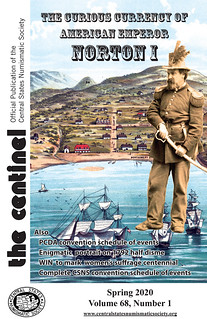 The spring issue of the Central States Numismatic Society's magazine, The Centinel, is traditionally devoted to promoting the upcoming convention. The magazine had been plated and was ready to be printed when the Central States board voted to cancel this year's convention.
The spring issue of the Central States Numismatic Society's magazine, The Centinel, is traditionally devoted to promoting the upcoming convention. The magazine had been plated and was ready to be printed when the Central States board voted to cancel this year's convention.
I contacted our printer as soon as I knew. They pulled it from the lineup just a few hours before it was scheduled to be printed. I'm going to recycle non-show content into the summer issue, but I thought your readers might like to see the cover of the magazine that never was.
Actually, the whole magazine will be sent to the Newman Numismatic Portal in 2022 as an historical curiosity. CSNS board policy is to release the magazine to the portal two years after publication.
For more information on the Central States Numismatic Society, see:
https://www.centralstatesnumismaticsociety.org/
To read back issues of The Centinel on the Newman Portal, see:
https://nnp.wustl.edu/library/publisherdetail/511275
BOOK REVIEW: IN GOD WE TRUST
Michael Marotta submitted this short review of the new book In God We Trust. Thanks. A fuller review will be submitted for publication in our print journal, The Asylum. -Editor
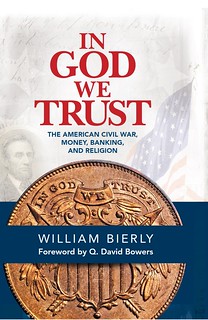 In God We Trust: The American Civil War, Money, Banking and Religion
In God We Trust: The American Civil War, Money, Banking and Religion
by William Bierly, Whitman Publishing, 2019, 336 pages, $29.95.
This book reveals very many facts, some deeply interconnected, others tangential to each other, some presenting intersecting truths, others delivering congruent validations. The central story appears in the middle of the book—Chapter 11: The Mint Act of April 22, 1864; and Chapter 12: Why the Words "In God We Trust"?. After a Preamble, Chapter 2: The Letter exposes the Reverend Mark R. Watkinson, the Baptist minister who wrote to Secretary of the Treasury Salmon P. Chase suggesting that our coinage should carry an appeal to the Almighty. Watkinson also took his plea to Mint director James Pollock and eventually to President Lincoln. But Watkinson was complicated. He started out as a rebel in support of secession; and he abandoned his congregation in Portsmouth, Virginia, when a different truth was revealed to him.
But it doesn't stop there. William Bierly has given American numismatics an important and lasting history. To put that statement into context, very few nations have been able to maintain their political traditions as long as we have. Most were changed and some were destroyed by wars and revolutions. Ours was born in a revolutionary war, and the War Between the States can be understood as the Second American Revolution. It was at once social, political, economic, financial, military, and technological. As an artifact of culture, money is speech; and for over 150 years, American money has declared liberty, union, and our trust in God.
To read earlier E-Sylum articles, see:
NEW BOOK: IN GOD WE TRUST (https://www.coinbooks.org/v22/esylum_v22n41a04.html)
AUTHOR: WHY I WROTE 'IN GOD WE TRUST' (https://www.coinbooks.org/v22/esylum_v22n45a05.html)
BOOK REVIEW: IN GOD WE TRUST (https://www.coinbooks.org/v22/esylum_v22n42a07.html)
PACIFIC EXPO SO-CALLED DOLLARS BOOK OF THE YEAR
This press release highlights the recent book by Jeff Shevlin & Bill Hyder: So-Called Dollars from the Pacific Coast Expositions. The duo are hard at work preparing their next book, so stay tuned for more information as is becomes available. -Editor
Medals and Tokens Book of the Year
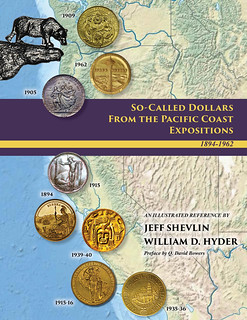 The latest publication on so-called dollars by Jeff Shevlin & Bill Hyder So-Called Dollars from the Pacific Coast Expositions won awards at the American Numismatic Association World's Fair of Money as the Best Book of the Year on medals and tokens. So-called dollars are medals struck to commemorate events in the United States history.
The latest publication on so-called dollars by Jeff Shevlin & Bill Hyder So-Called Dollars from the Pacific Coast Expositions won awards at the American Numismatic Association World's Fair of Money as the Best Book of the Year on medals and tokens. So-called dollars are medals struck to commemorate events in the United States history.
Q. David Bowers in his preface for the book states "With it's captivating narrative, color pictures, and other details you will have an ‘I am here' experience when reading about the expositions… I suspect this will be a dangerous book to own – for it might compel you to collect so-called dollars."
So-called dollars are the hottest area in numismatics. Since coin shows and so many other events have been cancelled due to the coronavirus, now is the perfect time to pick up a good book and learn about the great International Expositions that helped develop our country. This is a story book about the eight expositions that were held on the Pacific Coast and the fascinating medals struck there.
Hardbound, 8 ½ x 11, 300-page, full color editions are $59.95. A signed and numbered collector's leather-bound edition with a medal encased in the cover that was struck from the original dies engraved by George Morgan for the 1909 Alaska-Yukon-Pacific Exposition, limited to 100 copies, is available for $149.95. Shipping is $4.50 per book.
Published in conjunction with the book is the So-Called Dollar Collectors Pocket Price Guide which has photos of every medal, the compositions they were struck in, rarity information and values in five different grades, is available for $19.95.
To order their latest award-winning book visit the web site www.So-CalledDollar.com The book is also available on eBay or by contacting Jeff at SoCalledGuy@hotmail.com or (916) 955-2569.
To read the earlier E-Sylum articles, see:
NEW BOOK: SO-CALLED DOLLARS PACIFIC COAST EXPOS (https://www.coinbooks.org/v21/esylum_v21n44a04.html)
BOOK REVIEW: SO-CALLED DOLLARS PACIFIC COAST EXPOS (https://www.coinbooks.org/v21/esylum_v21n49a05.html)
BOOK REVIEW: SO-CALLED DOLLARS PACIFIC COAST EXPOS (https://www.coinbooks.org/v22/esylum_v22n05a06.html)
OFFICIAL REGISTER OF THE UNITED STATES ON NNP
The latest addition to the Newman Numismatic Portal is the Official Register of the United States. Project Coordinator Len Augsburger provided the following report. Thanks. -Editor
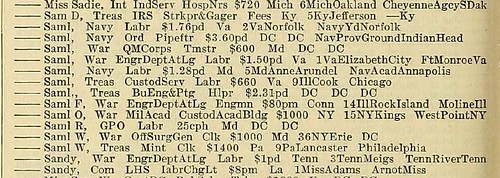
The Official Register of the United States is a little known resource that enumerates employees of the U.S. Mint and the Bureau of Engraving and Printing (BEP). Published by the U.S. government from 1816 to 1959, the Register variously includes either full or partial lists of Mint and BEP workers. These rosters are especially useful for the period 1873-1921, during which a complete list of employees appears. For other years, the Register enumerates high-ranking officials. Newman Portal acknowledges Mark Borckardt and Roger Burdette for suggesting this resource and contributing related content.
Image: Extract from 1913 Register listing Samuel W. Brown of Lancaster, PA as a clerk in the U.S. Mint
Link to the Official Register on Newman Portal:
https://nnp.wustl.edu/library/publisherdetail/536877
VIDEO: STEWART BLAY'S INDIAN CENTS
These are selections from the David Lisot Video Library that feature news and personalities from the world of coin collecting. David has been attending coin conventions since 1972 and began videotaping in 1985. The Newman Numismatic Portal now lists all David's videos on their website at:
https://nnp.wustl.edu/library/multimediadetail/522852
Here's one on Indian and Flying Eagle cents. -Editor
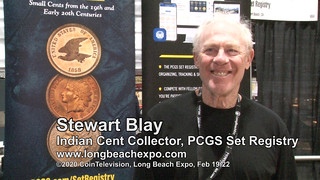 Best PCGS Indian Cent Collection Registry Set on Display at Long Beach Expo. VIDEO: 2:53
Best PCGS Indian Cent Collection Registry Set on Display at Long Beach Expo. VIDEO: 2:53
Stewart Blay, Indian Cent Collector, Interviewer, David Lisot, CoinTelevision.com.
It took him more than 30 years of effort and finally Stewart has one of the finest collections of Indian and Flying Eagle cents ever assembled. See some of his best coins and find out what it takes to have the best!
An excerpt of the video is available for viewing on the Coin Television YouTube Channel at:
https://youtu.be/01HadiH6q3Q

THE NUMISMATOURIST IS BACK HOME
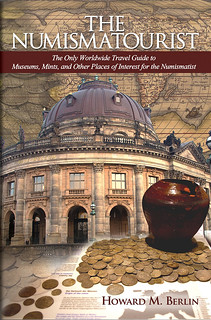 I've been staying in touch by email with our good friend Howard Berlin, known as the Numismatourist for his travels far and wide to visit numismatic museums. For great armchair reading and planning future visits once international travel resumes, check out his 2014 book The Numismatorist.
I've been staying in touch by email with our good friend Howard Berlin, known as the Numismatourist for his travels far and wide to visit numismatic museums. For great armchair reading and planning future visits once international travel resumes, check out his 2014 book The Numismatorist.
Howard recently reported on his visit to Dubai (linked below). He was back on the road this month and is safely back home in Delaware now, but his travel ordeal is one for the history books. Here's his report. -Editor
Despite the fears or the bans for those who have stopped traveling on account of the Coronavirus (aka COVID-19), I departed March 9 for my next trip overseas, which I had booked back in May 2019. In 10 flights and 5 hotel bookings, I had hoped to travel to Berlin, Tbilisi (Georgia), and Baku (Azerbaijan).
I made it to Berlin ok for an overnight stay and checked in to my hotel, which was nearly empty. I kept checking the US embassy and airline websites but there was no indication of cancelled flights or borders being closed.
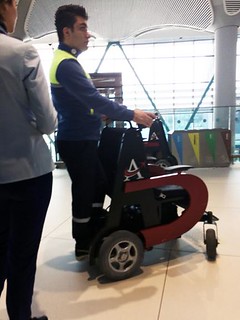 The next morning I departed for Tbilisi via a 2-hour layover in Istanbul's new airport which could teach London's Heathrow Airport a few things about efficiency. I've been in the old airport several times but this new one is huge! For those of us who need assistance getting around, there is this motorized wheelchair which is a combination Segway and wheelchair that zips along about 20 miles/hour. It was like sitting in the first row of a rollercoaster.
The next morning I departed for Tbilisi via a 2-hour layover in Istanbul's new airport which could teach London's Heathrow Airport a few things about efficiency. I've been in the old airport several times but this new one is huge! For those of us who need assistance getting around, there is this motorized wheelchair which is a combination Segway and wheelchair that zips along about 20 miles/hour. It was like sitting in the first row of a rollercoaster.
I arrived at my hotel in Tbilisi that overlooked Freedom Square. Like my hotel in Berlin, this too was nearly empty. I really felt sorry for people working here as they had virtually nothing to do. Information about the COVID-19 situation was increasing but all my remaining flights and hotel reservations were still in play, so I thought.
The main reason traveling to Tbilisi was to see the numismatic collection at the Simon Janashia Museum of Georgia, which is one of several museums of the Georgian National Museum. The museum was only two blocks from my hotel, a somewhat tiring walk owing to the very heavy air pollution from the auto and diesel exhaust and me wearing a protective mask and latex gloves to help protect against getting the bug and breathing the air pollution.
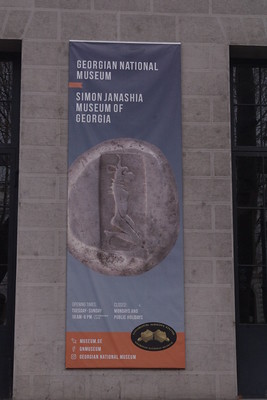 Upon reaching the museum, I found it to be closed, as a result of the pandemic! What a waste and one visit was now toast. My flights to Baku were still listed as being "on time." After staying in Tbilisi four days, I boarded my flights to Baku, via another stopover in Istanbul. When I got off the plane in Istanbul, I received a text that my flight to Baku as cancelled and also my visa to Azerbaijan was annulled. I was told that I would have to go back to Tbilisi, which I declined. Now the two numismatic collections I had planned to visit were no longer possible.
Upon reaching the museum, I found it to be closed, as a result of the pandemic! What a waste and one visit was now toast. My flights to Baku were still listed as being "on time." After staying in Tbilisi four days, I boarded my flights to Baku, via another stopover in Istanbul. When I got off the plane in Istanbul, I received a text that my flight to Baku as cancelled and also my visa to Azerbaijan was annulled. I was told that I would have to go back to Tbilisi, which I declined. Now the two numismatic collections I had planned to visit were no longer possible.
In the next few hours, I cancelled two hotel reservations and five flights. The only way I could return to the US was to fly into one of 13 designated airports. My "home" airport of Philadelphia was not one of them, so I booked a non-stop flight to Chicago O'Hare as the best option and a flight from there to Philadelphia for the next day. I stayed in the Turkish Airlines airport lounge for about 19 hours before boarding my flight to Chicago. Landing in Chicago, I thought I was to undergo "medical screening" but this never happened. I still needed to make it to my gate in less than two hours after going through passport control, customs, getting my suitcase and rechecking it for the flight home and then changing terminals. Luckily, I made it to my departure gate with about 30 minutes to spare before boarding. I arrived home around 1am.
So far I have no symptoms. Now the EU is closed to non-EU citizens, so I cancelled my trip that I was to make to Malta in May (5 flights, 3 hotels) and am trying to claw back prepaid hotel bookings, airline tickets, points and miles I used for the trip.
I guess it was not to be. My luck ran out on this trip.
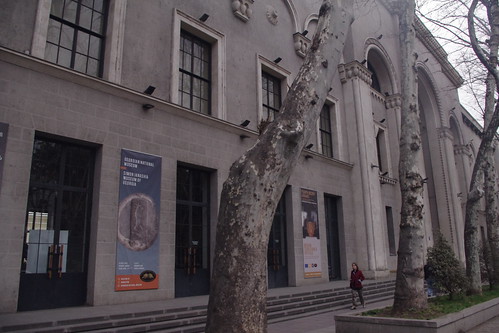
Entrance of the Georgian National Museum, closed due to the COVID-19 pandemic
Thanks for the report, Howard. We're relieved to know you're back home safely and doing well. -Editor
To read earlier E-Sylum articles, see:
NEW BOOK: THE NUMISMATOURIST (https://www.coinbooks.org/esylum_v17n31a03.html)
BOOK REVIEW: THE NUMISMATOURIST (https://www.coinbooks.org/esylum_v17n47a10.html)
INTERVIEW WITH HOWARD M. BERLIN (https://www.coinbooks.org/esylum_v17n47a16.html)
TOM BABINSZKI INTERVIEWS THE NUMISMATOURIST (https://coinbooks.org/v20/esylum_v20n33a18.html)
THE DUBAI COINS MUSEUM (https://www.coinbooks.org/v23/esylum_v23n08a23.html)
SHARJAH MUSEUM OF ISLAMIC CIVILIZATION (https://www.coinbooks.org/v23/esylum_v23n09a21.html)
AUCTIONS IN A WORLD OF CORONAVIRUS
Hale and hearty non-self-isolating 76-year-old Californian Alan V. Weinberg submitted this report on attending the relocated Stack's Bowers auctions this week. Thanks! He'd earlier cancelled two airline flights to / from Baltimore and a nonrefundable Baltimore hotel reservation. Numismatic history in real time. -Editor

PART I
I hadn't realized Southern California freeways were so relatively clear and one could drive 75-80 mph from Woodland Hills to Santa Ana, Stacks Bowers offices, until I made the drive Tuesday March 17 for lot viewing again, after lot viewing there weeks before the Baltimore show.
So I had made hotel reservations for Tuesday night facilitating a 10am Session 1 Wed at 10 AM.
Lot viewing was wide open, perhaps four different viewers all day, all sitting far apart. Stack's Bowers staff did a smooth job of providing lots. Interestingly, on Wednesday gloves were required to view lots. Ever examine a rare medal or coin wearing rubber gloves? Sure glad I did Tuesday viewing.
The auction was to occur at a 20 minutes distant fancy expensive Newport Beach Lido Hotel ($349/night rooms and up) but the night before Orange County Supervisors cancelled all such venues due to virus control and Stack's Bowers was told Wednesday morning, perhaps two hours before the sale commenced, that the auction could not be held there. So SB had to quickly figure out an alternative and gained access to a large vacant hall in their own building. I mean "vacant" like an empty dance studio. SB head Brian Kendrella phoned those who had registered as floor bidders Wednesday morning just minutes before I departed my hotel to drive to Newport Beach. I had anticipated this after watching Tuesday night's news.
I was the sole and only physical attendee at Session 1. A few foldup chairs 6' apart, a foldup table they provided, and the very basics to provide live internet broadcast and the auction commenced. No worries as Brian told me there were over 300 registered bidders for the sale. Prices seemed to be respectably healthy given the nationwide scare and unenforceable government orders to "shelter in place" along with a huge drop in the stock market and related retirement fund values.
What was interesting for me, as an old-timer since 1958, were the several lots consigned from the Bill Anton family, items that hadn't seen the light of day for four decades. Bill Anton, Jr. was renowned for having an eye and taste for numismatic rarity and he wisely bought when he was in his prime.
I underbid him at the Johns Hopkins University / Garrett Bowers sale in 1980 on a unique silver William Henry Harrison 1840 political silver medal and that loss haunted me since then. It was also %age-wise the most hotly contested Session 1 item, at an astonishing $4K hammer Tues night and Wed morning at $5500 hammer before the auction even occurred! I swallowed deeply wondering what it would end up "on the floor" but with a quick arm movement "cutting " the opening bid advance I won it at $5750 hammer, final price approx 3x the $2200 hammer Bill paid in 1980.
A superb Bode Birdstuffer Civil War token struck over a quarter sold all in for $7400, that too bought by Anton at Garrett IV in 1980 for $4400. A rare 1861 NY College cased gold medal, also ex-Anton, sold for $2,200 to Tony Terranova online, outbidding me (for years, we've had the same taste in numismatics).
I drove home happy I'd finally captured my elusive prey and planned on driving down Thursday for the Larry Ness Indian Peace Medal auction. Sadly but understandably, Brian K had to again call prospective floor bidders that the IPM auction had to be cancelled, almost certainly by the consignor concerned with the venue and virus-related economic concerns. The collection sale will be re-scheduled at some future time. So now I wait 'til Friday and the Pogue offering by Stacks Bowers with its 1804 dollar, 1854-S quarter and half eagle, etc. All I'm told UNreserved.
PART II
I did not attend the Thursday Rarities Night StacksBowers auction in their Santa Ana offices as there was nothing for me. But before I commence my Friday review of the Pogue session, I want to point out an absurdity for Thursday that reflects the nature of our hobby today. Lot 3112 a 1954 MS-67 red penny sold for $23,400 all in, a coin that must exist by the multi-rolls in red Unc...while a very few lots later lot 3123 SB sold a 1794 half dime in MS-64 - a coin that SB in print admitted they hadn't sold in just plain Unc since 2010 - for $26,400 all in. A $3,000 difference. Is there something askew here?
Now on to Friday. California Governor Newsom declared the night before that all businesses throughout CA that are open to the public be shuttered. I wondered about Friday's Stack's Bowers auction. But I hoped it was a go as the SB offices are way off the street, not open to the public and they'd thoughtfully arranged seating to be 6 feet apart and lot viewing requiring rubber gloves. And they consulted their attorneys about staying open.
Such was the auction facilities, again a large unfurnished hall which had a total of eight chairs accommodating three collectors and four dealers. Present were me, Walt Husak, another collector, Laura Sperber of Legend, David Hall and another dealer I didn't know. That's it! Now that might concern a consignor. But never fear. The phones manned by Scott Reiter and John Pack were busy and the Internet was a "killer". Whether it was the absence of shows for the foreseeable future or cabin fever I dunno, but prices were very strong considering the future.
The outlandish quality of the coins drew quality seekers who just wanted their coins, price be darned. A 1929 Standing Liberty quarter (lot 7178), the most frequently seen dated SLQ in VF in 1960s change, sold for $66,000 all in. Say what? As a group, the SLQs were terribly underestimated and it was not unusual for a coin to bring 10x the catalogue estimate due to outrageous condition. Most other lots did bring at or over estimate. A 1916-D dime in MS-67 sold for $204,000 (lot 7050) all in while an MS-65 one lot later and two grade points lower, sold for $45,600.
But there is a limit how high a rarity can sell for in these uncertain times. The 1804 dollar (lot 7304) brought $1,440,000 all in, the finest known 1854-S half eagle (lot 7335), opened at $1.5M and only advanced to $1.6M (all in $1,920,000 ). A few years ago these two coins would have brought 50% more.
My congratulations on how StacksBowers and Brian Kendrella handled this whole matter, particularly when there was extremely short notice , in most cases just hours to "punt". I can imagine the stress.
Driving home was an experience at 80 mph just keeping up with traffic. You can't imagine the aggressive driving I saw. Friend Walt Husak drove 2 1/2 hours (normally a 4-5 hour drive) from Solvang north of Santa Barbara to attend for a half hour and buy two lots. Now that's dedication.
Here are excerpts from the descriptions of selected lots. -Editor
Lot 7050: 1916-D Mercury Dime
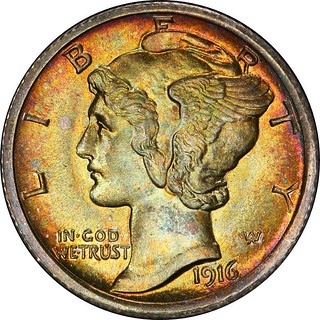
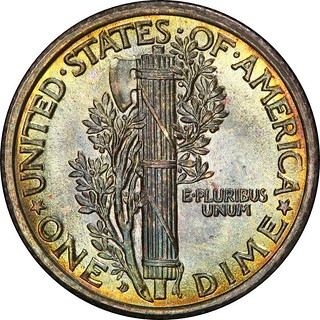
To read the complete lot description, see:
1916-D Mercury Dime. MS-67 FB (PCGS). CAC. (https://auctions.stacksbowers.com/lots/view/3-LYCZI/1916-d-mercury-dime-ms-67-fb-pcgs-cac)
Lot 7335: Finest Known 1854-S Half Eagle
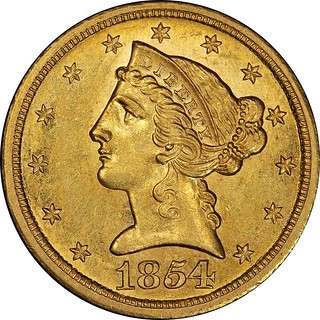
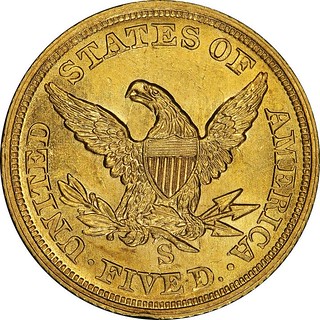
San Francisco Branch Mint Coiner James B. Harmstead recalled in his memoir, published as Sentiments and Aspirations of a 19th Century Tradesman, the week this coin was struck and the circumstances relating to its tiny mintage.
At the end of March '54, Superintendent Birdsall announced in the local papers that the new mint would open on April 3rd for the reception of bullion for coinage and bars. That day, Adams and Company brought in the first deposit of gold, which weighed in at around 45 ounces. Actual coining of their bullion deposit didn't commence until about two weeks after the mint opened, and then only on a limited basis …
We had a special ceremony in the pressroom on the 18th of that month to consecrate the first day of coining. In attendance were a few government officials and city notables to join in the activities. … That day, we produced the first 178 twenty dollar gold pieces, one of which was sent to the Mint Director in Philadelphia, James Ross Snowden. For some unknown reason [for assay purposes], we sent him five more, one on the 21st, the 26th, the 29th, and lastly, two more on the 4th of May.
Other denominations were produced during the first two week period, for on the 19th, 260 ten dollar gold pieces and 268 five dollar gold pieces were struck, with one of each sent to James Snowden that same day. On the 20th, 246 two and a half dollar gold specimens were produced and one example from this batch was also sent to the Director. The 246 two and a half dollar gold, and the 268 five dollar gold coins were the only ones made for the entire year.
To read the complete lot description, see:
1854-S Liberty Head Half Eagle. AU-58+ (PCGS). CAC. (https://auctions.stacksbowers.com/lots/view/3-LYD1G/1854-s-liberty-head-half-eagle-au-58-pcgs-cac)
Alan adds:
"A number of collectors have asked me if the strong Stack's Bowers prices were the result of the Brent Pogue pedigree. Personally, based on 61 years in this hobby and my instinct, I don't think so...even in the prior Pogue sales. It was the outlandish condition of Pogue coins that influenced the prices realized."
So what did Alan buy? Here are the lots. He writes: "All three are what I call "opportunity- only" acquisitions...so rare that no amount of money can locate a duplicate and you must wait interminably for one to surface for acquisition... UNLIKE literally any American coin which, given enough money, you can locate and acquire within days." -Editor
Lot 71: 1840 William Henry Harrison Medal
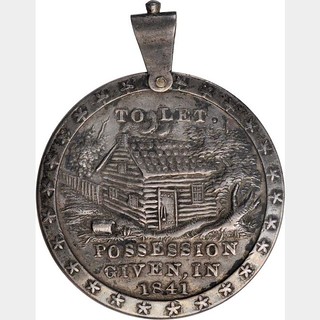
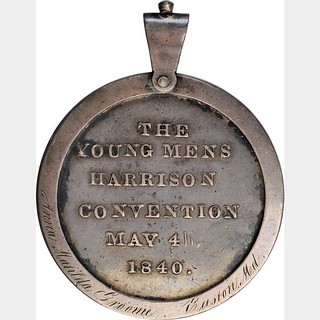
1840 William Henry Harrison Campaign Medal. DeWitt-WHH 1840-1. Silver. 43.7 mm. 567.9 grains. Extremely Fine.
With original integral hanger ornamented with a tiny finial. Engraved on the plain reverse rim in fine cursive to ANNA MATILDA GROOME at the lower left, EASTON MD at the lower right. Medium to dark gray silver on both sides. Small areas of faint hairlines are noted on both sides, while the reverse is gently accented by pale blue mottling. This type is the first listed in Sullivan-DeWitt for the 1840 campaign of William Henry Harrison, a campaign that proved a game-changer where circulation of medallic campaign ornaments is concerned. Sullivan sums it up like this in his brief introduction to the Election of 1840:
"Probably no more exciting presidential campaign ever occurred in this country than the 'Log Cabin and Hard Cider' campaign of 1840. The country was taken by storm with parades, log cabins on wheels and on street corners, cider parties, song fests, live coons, huge balls rolled from once city to another, and buttons, badges, sashes, lithographs, jewelry, and hundreds of other trinkets. Likewise, the medal and token makers were active to an unprecedented degree."
Great political piece with a super personal connection. -Editor
To read the complete lot description, see:
1840 William Henry Harrison Campaign Medal. DeWitt-WHH 1840-1. Silver. 43.7 mm. 567.9 grains. Extremely Fine. (https://auctions.stacksbowers.com/lots/view/3-LYRGX/1840-william-henry-harrison-campaign-medal-dewitt-whh-1840-1-silver-437-mm-5679-grains-extremely-fine)
Lot 300: 1861 New York Free Academy Cromwell Medal
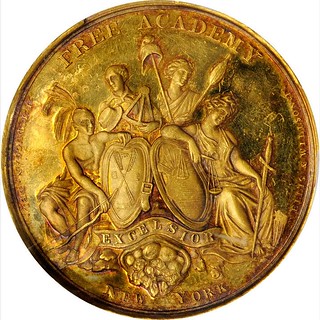
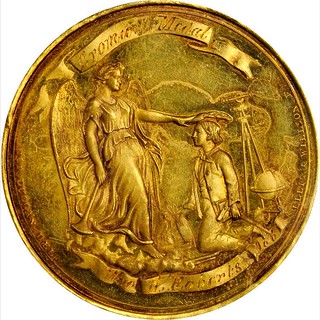
1861 New York Free Academy Cromwell Medal. Gold. 35 mm. 20.0 grams. SP-60 (PCGS).
Obv. Indian, sailor, Liberty and Justice support City and State shields. Rev. Winged Fame crowns kneeling youth with emblems of arts and sciences, scroll above is engraved Cromwell Medal. Scroll below is engraved to William H. Roberts, 1861. One of the nicest examples we have seen. The fields are boldly prooflike and rich orange toning highlights are on both sides. A bit of apparent light surface staining is in the reverse field, but it isn't too distracting. The dies were by Salathiel Ellis and Joseph Willson who are best known for having been awarded the contracts to engrave and strike several issues of the Indian Peace Medals for the United States government. Their signature is against the rightmost rim of each die. The quality of their work is quite evident here. Also included with this medal is the original thermoplastic case (often mis-identified as gutta percha), as often seen associated with Civil War-era tintype photographs. The case is superbly preserved aside from a pair of small edge chips in the lower border of the cover. The hinges are tight and the plush interior of deep blue velvet where the medal would fit, and crimson velvet inside the lid, is fresh and clean.
Wow! Fantastic piece. I wish I'd bought it. Alan got a bargain at $2,400. -Editor
To read the complete lot description, see:
1861 New York Free Academy Cromwell Medal. Gold. 35 mm. 20.0 grams. SP-60 (PCGS). (https://auctions.stacksbowers.com/lots/view/3-LYTPP/1861-new-york-free-academy-cromwell-medal-gold-35-mm-200-grams-sp-60-pcgs)
Lot 354: 1863 Bode Birdstuffer Token
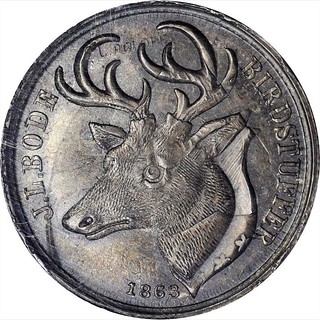
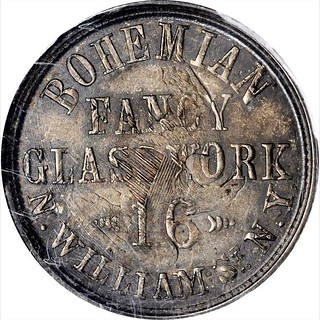
A spectacular example of this token, not only very rare in silver but potentially unique on the present host. Beautiful deep steel gray with gentle mottling and just a faint trace of rose at the central reverse. Boldly and evenly struck on the host, but with considerable portions of the undertype visible on both sides. The date of the quarter is prominently visible beneath the letters BIRD of BIRDSTUFFER on the obverse, while generous portions of the eagle are seen on the other side. A very handsome piece and from one of America's greatest collections. Likely purchased by our consignor in the Garrett sale and, as such, it is being offered here publicly for just the third time in 137 months of March. In the Garrett sale, Q. David Bowers was excited enough by this piece to give it a full page and valuable space on the color plate. That is quire remarkable in itself for a sale like that of the Garrett Collection that contained so many great rarities. This said, it did realize $4400 in 1981, so it seems its presentation was warranted!
Provenance: From Haseltine's 65th sale, March 1, 1883, lot 161; our (B&R) sale of the Garrett Collection, Part IV, March 25-26, 1981, lot 2045.
A fabulous pedigreed piece. -Editor
To read the complete lot description, see:
New York—New York. 1863 J.L. Bode Birdstuffer. Fuld-630H-1fo. Rarity-10. Silver. MS-64 (PCGS). (https://auctions.stacksbowers.com/lots/view/3-LYT90/new-yorknew-york-1863-jl-bode-birdstuffer-fuld-630h-1fo-rarity-10-silver-ms-64-pcgs)
John Adams was a buyer in the sales as well. He reports: "I am basking in an acquisition from the recent Stacks Bowers auction. It is the US Mint medal for Anthony Wayne. Rare in itself, it makes a super rare combination when paired with my Anthony Wayne original, the only one in collectors' hands. As you might surmise, I am quite partial to the man." -Editor
Lot 10: Anthony Wayne at Stony Point Medal
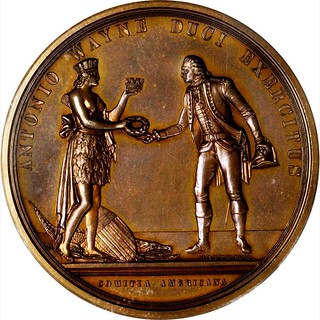
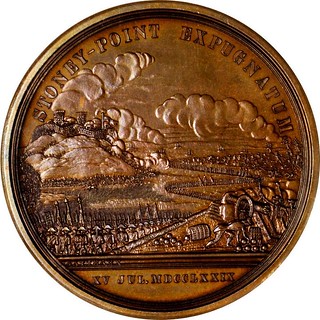
"1779" (Post 1887) General Anthony Wayne at Stony Point medal. Copper. 53 mm. Adams and Bentley-5, Betts-565, Julian MI-3. MS-66 BN (NGC).
The Anthony Wayne medal is one of the rarities of the series as the Paris Mint did not produce restrikes of this issue and the originals are great rarities, indeed.
This U.S. Mint version was struck in very small quantity. Just 47 are believed to have been made to meet collector demand in the late 19th century, but even with that number struck the Adams Collection remarkably did not include one. It its place were two electrotype copies, both of which realized 4-figure sums. It has been five years since we last sold one of these, a Specimen-65BN (PCGS) example, that realized just shy of $5300 in our November 2015 sale.
Great medal in superb condition. -Editor
To read the complete lot description, see:
"1779" (Post 1887) General Anthony Wayne at Stony Point medal. Copper. 53 mm. Adams and Bentley-5, Betts-565, Julian MI-3. MS-66 BN (NGC). (https://auctions.stacksbowers.com/lots/view/3-LYRV8/1779-post-1887-general-anthony-wayne-at-stony-point-medal-copper-53-mm-adams-and-bentley-5-betts-565-julian-mi-3-ms-66-bn-ngc)
Here's a great CoinWeek video produced beforehand of the Pogue collection. -Editor
To read the complete article, see:
20th Century Coin Masterpieces - The Pogue Collection: Part VII (https://www.youtube.com/watch?v=RIipqunZfdI&feature=youtu.be)
CORONAVIRUS UPDATES: MARCH 22, 2020
Coin World, Numismatic News, CoinWeek and countless other channels will have more comprehensive and up-to-date information on numismatic event cancellations and reschedulings (such as the closing, reopening, and reclosing of the PCGS Orange County, California office). But here are some notes of interest that crossed my desk this week. -Editor
MPCFest 21 Cancelled
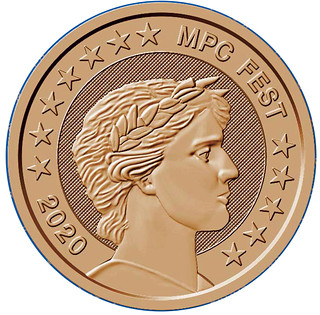 In MPC Gram Series 21 No. 2400 (Mar 16, 2020) editor Fred Schwan writes:
In MPC Gram Series 21 No. 2400 (Mar 16, 2020) editor Fred Schwan writes:
"It is with great sadness that MPCFest headquarters announces that MPCFest 21 is cancelled. While this will not be a surprise to any Fester, it will nevertheless be a matter of disappointment."
MPC Gram is an email publication for collectors of Military Payment Certificates and other military numismatic items. Their annual Fest in Ohio is beloved by attendees and a great model for what other specialty groups could do for their members. Fred illustrated the planned design for the cancelled Fest's challenge coin. Very nice. -Editor
Life at the Epicenter, Kirkland Washington
Kellen Hoard writes:
"For me, this whole thing is rather surreal. In fact, my city is THE epicenter in Washington state, which makes it feel all too close. Not only is my city the place of origin, but the main street next to my house is the exact epicenter. Crazy stuff. My school is, of course, cancelled, so things at my house have been rather slow. I am still trying to be productive though, especially in regards to numismatics which had taken a sort of back burner recently to the numerous other activities in which I take part."
Banking
My local Capital One Bank writes:
"While the majority of our Capital One Bank branches will remain open, we have temporarily closed select branches. As a necessary precaution, we are temporarily closing branches that do not have glass-protected tellers or drive-through servicing. We believe these are important steps to minimize the risk of COVID-19 transmission.
"Capital One ATMs will remain open 24/7, and we will be temporarily waiving our fee for out-of-network ATMs."
Editions Gadoury, Monaco
Editions Gadoury writes:
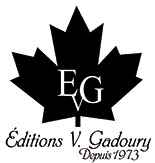 "Our shop will remain closed to the public due to the current health situation and the security measures adopted by the Principality of Monaco until further notice. Our site continues to function and new online auctions will be offered periodically. Orders will be sent as soon as possible.
"Our shop will remain closed to the public due to the current health situation and the security measures adopted by the Principality of Monaco until further notice. Our site continues to function and new online auctions will be offered periodically. Orders will be sent as soon as possible.
"Don't miss our online auction which will close on April 3rd at 16.00.
"Editions Gadoury reserves itself the right to delay or cancel any order following the needs, demands or recommendations of the Monaco Authorities."
Sotheby's reports ‘surge' in online buying
From the Antiques Trade Gazette:
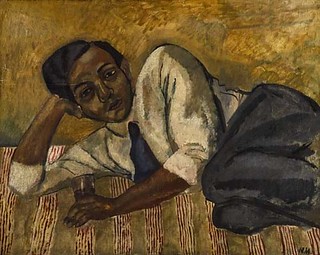 "In one of the first tests of the art market since the UK government announced tougher ‘social distancing' guidance due to the coronavirus outbreak, Sotheby's latest ‘Made in Britain' auction recorded a dramatic increase in online bidding.
"In one of the first tests of the art market since the UK government announced tougher ‘social distancing' guidance due to the coronavirus outbreak, Sotheby's latest ‘Made in Britain' auction recorded a dramatic increase in online bidding.
"Despite understandable concerns that the market may take a major hit, the sale total and selling rate held up at this sale at least, despite the number of people in attendance in the saleroom itself being significantly reduced.
"The mixed auction of Modern and Post-War British art raised £2.11m with 237 of the 291 lots sold (81.4%). Although the total was down on the £2.48m from the equivalent sale last year, Sotheby's reported that they had nearly 10% more bidders overall.
"Online buyers hoovered up 53% of the lots sold, a 30% increase year-on-year and a remarkable figure for a category which is normally dominated by room and phone bidders."
To read the complete article, see:
Sotheby's reports ‘surge' in online buying as clients forced to bid from home (https://www.antiquestradegazette.com/news/2020/sotheby-s-reports-surge-in-online-buying-as-clients-choose-to-bid-from-home/)
Riding the Wave
In a March 19, 2020 email HLRC In the Loupe newsletter, dealer and E-Sylum supporter Harry Laibstain writes:
"We struggled to decide if we should send out our newsletter, but in the end felt it best to stay positive. Many of us will be cooped up in our homes over the next several weeks and we figured it would have entertainment value and be a pleasant distraction from the current backdrop. If you would like to discuss or purchase one of our great selections we will do our utmost to fill your order at a great price and timely manner. Currently both U.S Mail and Fed Ex are running and our building has no restrictions. If it stays that way it will be business as usual at HLRC.
"Many events all over the country have been cancelled. The Baltimore and Central States shows have been cancelled. I have been doing these shows for 40 years and this has never happened. PCGS is open but was momentarily closed then open again. Very strange indeed. Needless to say, events unfolding rapidly are creating a fluid situation.
"This is the largest social participation or non-participation event to ever occur in our country. The world and human behavior will be changed forever. People seem to have a fatalistic attitude. When I asked my daughter in New York, a current hot spot, how they are doing, she replied, "Riding the wave".
Click on those ads! Check out dealer inventories. Fill holes in your collection and look for bargains. There's always a good deal to be had if you look. -Editor
Canadian Coin shows cancelled
From Canadian Coin News:
"Following Health Canada's community-based measures to mitigate the spread of COVID-19, many show organizers are cancelling their events. In addition to public and mass gathering cancellations, these community-based approaches include avoiding crowding, school closures and workplace measures and closures.
"This is really devastating not just for everyday life but for the numismatic community as well," said Paul Johnson, long-time executive secretary of the Royal Canadian Numismatic Association (RCNA).
"It's going to affect a lot of people, including dealers and their sales. It's their livelihood. People can still buy coins through the mail, but the interactions at shows is so important. Obviously, it's very important to keep the lines of communications with dealers and other collectors open, but other than that, there's not much that can be done. We have to pull together as a group, and hopefully sometime in the future this gets sorted out. We can all see what's happening out there and it's devastating."
To read the complete article, see:
Coin shows cancelled as coronavirus panic hits Canada (https://canadiancoinnews.com/coin-shows-cancelled-as-coronavirus-panic-hits-canada/)
Virtual Hangouts: Embrace the weirdness
Clubs may want to experiment with virtual meetings. The technology is already here - we just need more people and groups to get used to it. Here's a helpful article I found in our local Washington Post. -Editor
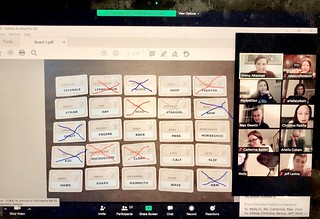 "But "talking" and "hanging out" are not the same thing. And especially if coronavirus-induced social isolation stretches on for months, as experts now say it might, just talking to friends isn't going to cut it.
"But "talking" and "hanging out" are not the same thing. And especially if coronavirus-induced social isolation stretches on for months, as experts now say it might, just talking to friends isn't going to cut it.
"All over the world, people are already making memories across a video screen, staging virtual baking sessions, art classes, dance parties, book clubs, birthday parties and family dinners.
Embrace the weirdness of the situation
"When we try to pretend things are normal, it causes more anxiety," says Allie Nagle, a Salt Lake City based therapist, who planned a "family dinner" for 10 of her closest friends on Monday. "It's okay for this to be weird — just giggle and agree to make the best of it." Inevitably, there will be technical glitches, Nagle says, but don't let that throw everything off. Whenever someone's screen froze at the dinner, they took a beat and waited for the technology to sort itself out. By the end, they were making jokes about it. "We'd say, ‘Hey if your screen freezes, you should probably moon us,' and everyone would laugh." The key, Nagle said, was to acknowledge the "odd moments of disconnection with humor and grace."
To read the complete article, see:
8 tips for hosting the perfect virtual hangout (https://www.thelily.com/8-tips-for-hosting-the-perfect-virtual-hangout/)
David Kahn, Maryland
In his March 20, 2020 David Kahn Rare Coins Update, dealer and E-Sylum supporter David Kahn writes:
"It was only a few short weeks ago that I could not have imagined writing those words...Spring 2020 without coin shows. How times have changed.
"Yes, we're all presently in a bit of a bind, at a minimum. Yes, these are challenging times, and there are likely to be many more challenges ahead. We will all be spending a lot more time indoors, our routines completely disrupted. And, we all have plenty of things to be concerned about, foremost among them is our health and that of our families, friends and loved ones. First things first, of course.
"But we as collectors have an island. That's one of the truly great things about collecting anything...a collection provides a diversion - usually a diversion from the rigors of daily life - and that fundamental concept is even more important now. Take some of your excess indoor time to really review your collection, study it in detail, discover things you haven't seen. Would I be very appreciative if you spent some time on my website, and found something nice to add to your collection? Of course, but that's not a requirement to enjoy your hobby. Read a numismatic book. Share a line of research you're involved in with other collectors. Ask a question you've wondered about. Write something for a numismatic publication. I'm here to help in any way I can, but there are hundreds of online places and resources you can use.
"Rest assured that Melissa and I remain hard at work listing new items, and will continue to do that just as long as we can. We have lots of coins that are now stuck at PCGS (for those who may not have heard, PCGS is closed as a non-essential business...Gov. Newsom didn't consult the collecting community on that detail), but we also have a pretty good stock of coins to work with here.
"So, when will our next show be? We have no idea. We would be setting up next at Gettysburg, PA in a couple of weeks, but that isn't going to happen. Of course, later in April, we would see many of you at Central States near Chicago, but that will have to wait until next spring. We fervently hope that Baltimore in June finds us all together again. In the meantime, please do not hesitate to email or call if Melissa or we can help you in any way. We'll be very happy to hear from you."
Baldwin's, London
In a March 20, 2020 email Baldwin's writes:
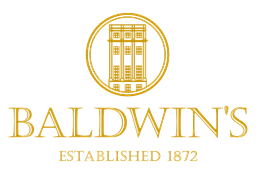 "As a near 150-year-old organisation, Baldwin's has seen many challenging moments throughout its history. Witnessing the developments of Covid-19 has saddened us while at the same time has re-enforced our commitment to the two most important elements of our business, namely our colleagues and our customers.
"As a near 150-year-old organisation, Baldwin's has seen many challenging moments throughout its history. Witnessing the developments of Covid-19 has saddened us while at the same time has re-enforced our commitment to the two most important elements of our business, namely our colleagues and our customers.
"Over the last few weeks, we have been working continuously to ensure that we do all we can to protect everybody as much as possible while providing you with the best, most comprehensive service possible.
"The situation continues to change day by day, if not hour by hour. For the majority of this week, many of our staff have been working from home and this proportion will increase further. We have also operated a policy of staggered attendance on a team by team basis.
"Throughout this time, all areas of our business have remained open but in order to further protect both our colleagues and customers, as of today we have reluctantly closed our shop in Central London on a temporary basis. The Baldwin's team, however, remain willing and able to assist you by phone or email and distribution of our products, all of which are available online, is currently unaffected. We would love to hear from you if you are interested in buying, selling, or simply discussing the wonderful world of coin collecting. "
Harvey Stack, New York
Harvey Stack has been at home, feeling better and working on his next blog article on the history of his family firm. He writes:
"I am up to 1988 and when I did some research I almost forgot that in Oct. 1987 we had a "Black Monday" on October 19th and that did a real job on the economy. The Market dropped over 20% and there was wild selling including precious metals. It really took a full year to recover without a virus. I am concerned that we Will have a long wait to get out of this mess.
"In checking as I can from home the effects of the coin market in that period we fortunately had a drop and a quick revival as it seems that those Who collected did not sell wildly as they loved their coins and felt they still were a 'store of value'. Let's hope they feel the same with this virus we are all encountering."
Free delivery on numismatic books!
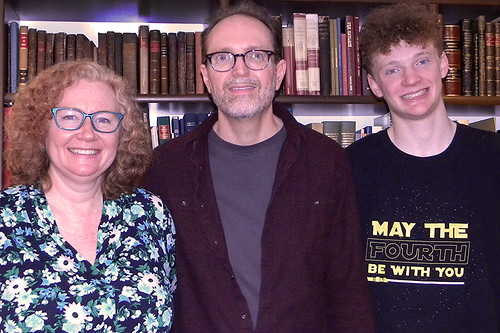
In a March 20, 2020 emailing, E-Sylum supporters David, Maria and Sam Fanning of Kolbe-Fanning Numismatic Booksellers write:
"To help you pass the time at home we are offering free delivery on all orders to our customers in the United States. International shipping is still determined by package weight, but shipments outside the U.S. can subtract $10 from the calculated cost. We will add the shipping cost after the order is weighed.
"Thank you for supporting our small business during this stressful time. We are taking every precaution to stay healthy so we can continue to help you remain engaged in the hobby."
To visit the Kolbe & Fanning web site, see:
https://www.numislit.com/
Ron Guth, San Diego
Dealer, researcher and E-Sylum supporter Ron Guth writes:
"All is well here in shelter-in-place California. We're still able to go outside and do the usual grocery, pharmacy, bank, exercise,and P.O. runs. Trader Joes is rationing entrance to our local store and wiping all the carts down before and after each use. The Post Office has marked their floor so that customers are distanced 5-6 feet from each other.
The beaches in San Diego and the boardwalk in Pacific Beach are less populated, but populated nonetheless. People act a little weird when they get close to each other. My wife runs infection control at the La Jolla VA and is required to go to work every day...I'm a little worried about her. Fortunately, her commute time has now dropped from 30-45 minutes each way to 13. I've been working at home since 2008, so this is no big change for me.
On the plus side, we can "see" each other on Twitter, Instagram, Facebook groups such as the Virtual Coin Show, Coin Cube Trading, Coin Dealers Helping Coin Dealers, etc.
Stay healthy everyone. This, too, shall pass."
Saul Teichman, New York
Saul Teichman writes:
"New York is pretty much shut down. Only essential services are open. It is still difficult to get paper goods, chicken, bread, pasta and sauces etc. Canned goods and certain frozen foods fly off of the shelves as well as soon as they become available.
"As I work from home, I am not impacted by the shelter in place rules and at least money is coming in. My sister works for a medical supply company so she commutes to work each day but they are out of masks and other items that people want like alcohol and gloves are hard to come by. The only good thing about this is that there is much less traffic on the roads.
"On the coin front, we will see how long it takes for this to reach a comfort point to see if the June Baltimore or even the August ANA convention shows go on. The Stack's Bowers sale seemed Ok although the three million dollar coins went a bit low in my opinion. My guess is auction activity will continue online and perhaps companies will update their inventory online more frequently or send out more inventory listings via email than they normally would.
"Everyone please keep safe during these extraordinary times."
Q. David Bowers, Wolfeboro, NH
Dave writes:
"This too will pass. As people are not going on cruises and as vacations are postponed, I see increased activity in the dynamism of rare coin auctions. The Stack's Bowers Galleries sale broke a lot of records. From what I understand here in NH, sales of automobiles and real estate are very strong. Strange times in the world. Keep safe."
Jeff Rock, San Diego
E-Sylum supporter Jeff Rock writes:
"It will definitely be interesting to see how this plays out with the future of coin shows. The Stack's Bowers sale had, as QDB pointed out, many record prices - but at least in the colonial section it had absolutely no bargains. People may have been forced to stay home, but they were staying home and bidding (likely with the money that they would have spent in person at the Whitman Baltimore show!). Perhaps auctions do not need to be tethered to a coin show - and perhaps shows themselves move online. Swipe left, add the coin to your cart, checkout with PayPal or ApplePay and your coin is shipped from some remote AmazonCoin warehouse. Brave New World, indeed!
When you think of what our parents and grandparents suffered through - the Great Depression, WWII - surely sitting at home watching TV and eating more than we should for a couple weeks or even months is not the biggest price humanity ever had to pay. Stay safe, we will get through this."
David Stone, Dallas
David Stone of Heritage writes:
"Best wishes to all in these strange times! Things in Dallas have the same post-apocalyptic appearance I hear about everywhere - empty streets, empty shelves in the super markets and many businesses closed. So far, the changes have been tolerable, with no crippling shortages and most people keeping their spirits up, despite the universal anxiety and uncertainty. Some are keeping journals to record these extraordinary times for posterity.
"Work has gone on more or less uninterrupted, since cataloging has built-in social distancing protocols and much can be accomplished remotely. Hope this finds everyone well and safe. We will get through this together."
Joel Orosz, Kalamazoo
Joel writes:
"Kalamazoo is following the rest of the nation into this strange combination of 17th century plague conditions and 21st century failed state shortages. I'm just waiting for some desperate collector to offer to trade a mint state 1794 dollar for a four-pack of toilet paper. I would take that deal now, but a few days from now, I'm not so sure.
Due to very dodgy immune system, I've been self-quarantining for ten days. Not a bad deal to be, for the good of the community, forced to hang out in my numismatic library. I do miss seeing the grandchildren, and now that my wife has total control over the grocery cart, I'm eating revoltingly healthful meals.
All privations can be borne with equanimity as long as Len Augsburger keeps running the Newman Numismatic Portal, and Wayne Homren keeps publishing The E-Sylum. If either of these twin portals of civilization should fall, it's to the barricades for all of us!"
Yet Life Goes On
John Adams writes:
"Yesterday evening at 6pm, I ordered four bottles of olive oil. At 9 pm to the minute, the door bell rang and, yes, it was the olive oil."
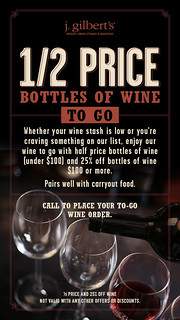 These are Terrible, Horrible, No Good, Very Bad times, but short of widespread power or cyber outages or outright war, I suspect we'll get through this without drinking our own urine to survive. I'm doing fine with tap water and soft drinks, but one of our favorite Nummis Nova restaurants (J. Gilberts) writes: "Whether your wine stash is low or you're craving something on our list, enjoy our wine to go with half price bottles of wine (under $100) and 25% off bottles of wine $100 or more. Pairs well with carryout food." Maybe that's where where the $100 bill hoarders will be shopping. Use your 25% off to tip the remaining staff. Seriously, if you've got a paycheck, please do everything you can to support the local businesses you depend on, and especially their hard-hit workers.
These are Terrible, Horrible, No Good, Very Bad times, but short of widespread power or cyber outages or outright war, I suspect we'll get through this without drinking our own urine to survive. I'm doing fine with tap water and soft drinks, but one of our favorite Nummis Nova restaurants (J. Gilberts) writes: "Whether your wine stash is low or you're craving something on our list, enjoy our wine to go with half price bottles of wine (under $100) and 25% off bottles of wine $100 or more. Pairs well with carryout food." Maybe that's where where the $100 bill hoarders will be shopping. Use your 25% off to tip the remaining staff. Seriously, if you've got a paycheck, please do everything you can to support the local businesses you depend on, and especially their hard-hit workers.
I've heard from many others of you this week as well, but I'll have to stop there. I hope to keep publishing The E-Sylum for the duration. Thanks to all who have contributed, and keep your emails coming.
I had to pause this afternoon, though. I was outside walking our dog around the block, keeping my distance from other people, especially this one guy I don't think I'd ever seen before. He was an old man walking with a cane, wearing black sweatpants and a black hoodie sweatshirt, with the hood up over his head, looking for all the world like The Grim Reaper. It creeped me out, especially when he turned down our street and walked toward our house. I thought about tackling him just in case, but he shuffled on by.
I'll end with this great photo from Gary Beals. There will be quite a collection of great photos taken of normally bustling public spaces denuded of people (badminton in Times Square, anyone?). Enjoy the world virtually without the intrusion of other pesky humans. -Editor
Emptied Tourist Spots
Gary Beals of Segovia, Spain writes:
"The plaza around the Roman Aqueduct of Segovia at 6 P.M. of most any day will have a few hundred people milling about. But the Corona-Virus shut things down last Friday and it looks like that will be the situation for some weeks to come."
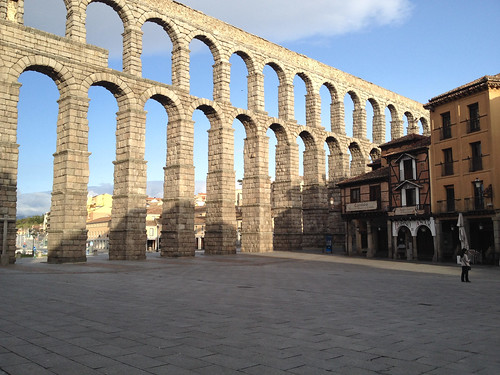
To read the earlier E-Sylum article, see:
CORONAVIRUS COMES FOR THE COIN SHOWS (https://www.coinbooks.org/v23/esylum_v23n11a11.html)

NOTES FROM E-SYLUM READERS: MARCH 22, 2020
Howard Daniel Remembers Ray Dillard
Howard A. Daniel III writes:
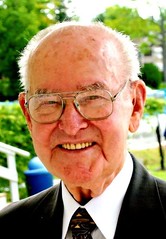 "I was very saddened to read about Ray Dillard passing. I have known Ray since the first ANA Convention I attended back in the 1970s. Except when he was thinking about something, he had a smile on his face and warmly greeted everyone. I would kid him about why anyone would want to collect elongated coins but I stopped after I found many numismatists had them in their collections. One time he gave me a handful of them at a show and told me to pass them out in Viet Nam to see their reaction. The Vietnamese loved them! When I told him about their reaction, he smiled and said "everyone likes elongated coins." I will never forget Ray Dillard."
"I was very saddened to read about Ray Dillard passing. I have known Ray since the first ANA Convention I attended back in the 1970s. Except when he was thinking about something, he had a smile on his face and warmly greeted everyone. I would kid him about why anyone would want to collect elongated coins but I stopped after I found many numismatists had them in their collections. One time he gave me a handful of them at a show and told me to pass them out in Viet Nam to see their reaction. The Vietnamese loved them! When I told him about their reaction, he smiled and said "everyone likes elongated coins." I will never forget Ray Dillard."
To read the earlier E-Sylum article, see:
RAYMOND W. DILLARD (1925-2020) (https://www.coinbooks.org/v23/esylum_v23n11a07.html)
Daniel "Tiny" Cross (1960-2020)
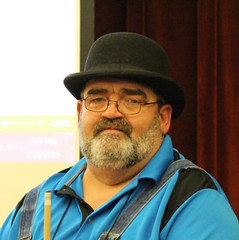 Dave Lange writes:
Dave Lange writes:
"It was announced today that Daniel "Tiny" Cross passed away. He was one of the great fixtures of the ANA's Summer Seminar and a really sweet guy who will be missed by all who knew him. I had some great times with him, and he'll always be remembered as the seminar's unofficial "taxi" driver with his college golf cart."
Sorry to hear the news. -Editor
Here's a link to his funeral home page:
Daniel Leo Cross (https://www.butlerfuneralhome.com/obituaries/Daniel-Cross-4/)
Tatham Stamp & Coin Co. Envelope
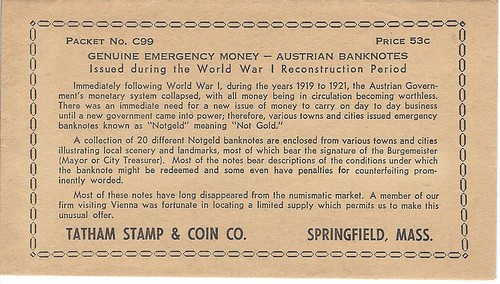
Jeremy Schneider writes:
"With essentially everything locked down here in Denver, I have had some time to go through my collection- especially a lot that I purchased last year at a garage sale. Late last summer, I purchased a large album and shoe box of miscellaneous international currency and random numismatic "stuff". Although at the time I briefly flipped through it and pulled things that I knew were interesting (a $10 national bank note, win!) I essentially set it aside for a rainy day.
"One thing I found interesting in the collection that I wanted to send your way was this small envelope from the deal Tatham Stamp & Coin Co. Springfield Mass. I know that there has been a running article on historic coin dealers (perhaps there is a book being written as well?) but thought that this may be helpful in research etc. "
Thanks. Anyone else have one of these in their ephemera collection? -Editor
'Spending' Liberty Dollars
Tom DeLorey writes:
"The item on the ephemeral Liberty Dollars reminded me of a time when I was working for Harlan Berk and silver was priced at just below $7 an ounce and the one ounce silver Liberty Dollars were "denominated" at $10 each. A man came in and tried to make a $9.95 purchase with one, and as he tendered it (loose from his pocket and slightly mishandled) said "You HAVE to take this for ten dollars!" Bemused, I spent several minutes arguing with him about why my offer to take it in trade at the spot price of silver was more than reasonable. I do believe that the man was quite serious in his mistaken belief that the fantasy denomination was real, which just goes to show you the power of propaganda and the gullibility of fools."
To read the earlier E-Sylum article, see:
NEW BOOKS: THE LIBERTY DOLLAR (https://www.coinbooks.org/v23/esylum_v23n11a04.html)
Anne Bentley of the Massachusetts Historical Society forwarded this delightful if creepy image of a moneyer as one with his coin press. From a newly released collection of images. -Editor
Paris Musées, a collection of 14 museums in Paris have recently made high-res digital copies of 100,000 artworks freely available to the public on their collections website. Artists with works in the archive include Rembrandt, Monet, Picasso, Cézanne, and thousands of others.
So.. who's this artist? Could anyone track that down for us? Interesting. -Editor
Anne adds:
"It could definitely serve as a Halloween costume in the times of social distancing!"
To read the earlier E-Sylum article, see:
Paris Museums Put 100,000 Images Online for Unrestricted Public Use (https://kottke.org/20/01/paris-museums-put-100000-images-online-for-unrestricted-public-use)
Cambodian, Burmese or Indian Hamsa Bird Medal?
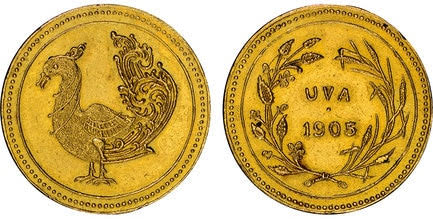
Howard Daniel writes:
"I have been seeing this medal for about a year now and have been twice asked to identify it. The current owner, Atlas Numismatics, has it listed for US$2950.00 with Inventory Number 1053147 and described as issued during the time of King Sisowath I of Cambodia. He was the king from 1904 to 1927. The gold medal is dated 1905 with UVA and certified by NGC.
"Cambodia is as good a guess as any but I believe the medal is possibly from the time of British Burma and not Cambodia. If it was French Cambodian the UVA (United Veterans Association?) would likely be AVU in French. The bird is also a very strong (more like a goose) Hamsa bird, which was commonly used back in 1905 and previous years in Burma (and India). The diameter of 22mm and the weight of 7.36 grams does not fit into other Cambodian medals, or Burma for that matter. It is even possible the medal could have been awarded by and organization within the University of Virginia!
"If a reader has any idea where this medal was issued and by whom, please contact me, Howard A. Daniel III, at HADANIEL3@MSN.COM and Atlas Numismatics at INFO@ATLASNUMISMATICS.COM. Thank you very much in advance."
Interesting attribution problem. Can anyone help? -Editor
Vincent Contamin, Contamin Pantograph Inventor?
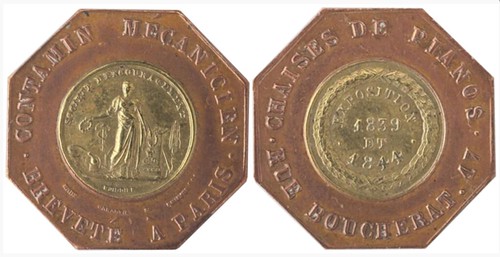
David Powell writes:
"You quote in the latest E-Sylum: "The inventor, Contamin (the remainder of his name has been lost to time) was French."
"Not definitely proved, but my suspicion is that the inventor concerned was Vincent Contamin {1800-1881}, father of Victor Contamin {1840-1893}, a prominent engineer for whom there is a Wikipedia entry.
"Vincent himself does not seem to be mentioned by forename in any articles about the activities of the older M.Contamin in the 1830s and 1840s, but he does occur as Victor's father on one or two family history websites. However, they do not say much about him.
"The excellent French paranumismatic/exonumia website https://wikicollection.fr/ has a token issued by someone who, is in all probability, the pantograph inventor whom Robert Whithead speaks of. He is described on the token as a mécanicien {engineer}, although his stated activities relate to pianos and the chairs associated with them. There are several Google Books references to this side of his work "All rather speculative, but it may be of use to someone who wants to follow it up."
Excellent lead! What do readers think? -Editor
Links:
• Victor Contamin (https://en.wikipedia.org/wiki/Victor_Contamin)
• Victor Contamin (https://gw.geneanet.org/provillain?lang=en&pz=pierre&nz=granier&p=victor&n=contamin)
• https://wikicollection.fr/
• Jetons publicitaires – Paris (Seine) – Contamin / Chaises de pianos (https://wikicollection.fr/?p=85370)
• Gazette musicale de Paris, Volume 10
To read the earlier E-Sylum article, see:
REDUCTION MACHINES AT THE U.S. MINT (https://www.coinbooks.org/v23/esylum_v23n11a13.html)
Fugio Cent Die Trial Discovery
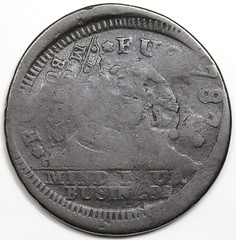
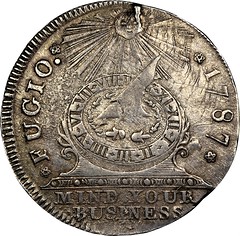
Fugio Cent die trial and a later spalled and cracked state
Craig Sholley writes:
"John Dannreuther and I recently made a fantastic discovery. We thought the double-struck Fugio cent die trial was the only known strike from the Yale Museum 107 obverse die based on the lower cinquefoils positions. However, in looking more closely, JD noted that the rotation of the cinquefoil below F did not match that on the 107 die. On the double-struck piece, the one lobe of the cinquefoil points at the junction of the upright and the serif of F, while on 107, one lobe points above the top serif of F and the other points t the junction of the upright and the left lower serif! Obviously, the double struck piece IS NOT 107.
"After a little more comparison, we realized that this rotation matches a single die - the Newman 105 obverse! Thus, this die trial was most likely struck in 1861 by John K. Curtis shortly after he had purchased the dies (105 and QQ) from Horatio Rust and shortly before the he had the silver pieces struck. Since the 105 die was lightly cracked from the rim to the top of the sun in the earliest state of 105-QQ, the die trial is likely a "test strike" to see if the die would hold up under striking.
"I've attached images of the die trial and a later spalled and cracked state of 105. The earliest state of 105 is picture in Newman."
Great discovery! -Editor
1921 SILVER COIN ANNIVERSARY ACT SUPPORT SOUGHT
The Pennsylvania Association of Numismatists (PAN) published this press release today. There is also a nice article on the topic by Lou Golino on CoinWeek (linked below). -Editor
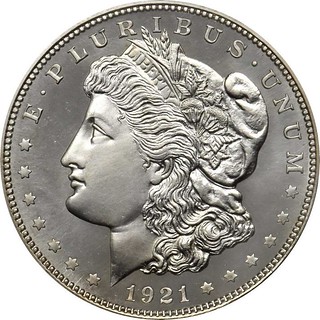 The Pennsylvania Association of Numismatists and PAN President Thomas Uram are appealing to collectors to support new coinage legislation, House Bill H.R. 6292, directing the United States Treasury to produce 2021 Morgan and Peace dollars recognizing the significant silver dollar coinage change that occurred in 1921. The Morgan silver dollar that represented the nation's wealth and westward expansion was replaced with the Peace dollar representing a new world vision of the post World War I era.
The Pennsylvania Association of Numismatists and PAN President Thomas Uram are appealing to collectors to support new coinage legislation, House Bill H.R. 6292, directing the United States Treasury to produce 2021 Morgan and Peace dollars recognizing the significant silver dollar coinage change that occurred in 1921. The Morgan silver dollar that represented the nation's wealth and westward expansion was replaced with the Peace dollar representing a new world vision of the post World War I era.
A previous House Bill in 2019, that many supported, was put forth to produce these coins as commemorative coins but did not pass because only two commemorative coin programs are permitted each year. The 2021 Christa McAuliffe and the 2021 National Law Enforcement Museum commemorative coin projects gathered the needed legislative support and were enacted into law and will be produced in 2021.
Tom Uram and fellow project collaborator Michael Moran both reworked their strategy and chose not to give up on this popular collector idea. They were able to gather enough legislative support to have these coins issued as legal tender coins instead of the more restrictive commemorative coin program. Tom is currently chairman of the Citizens Coinage Advisory Committee (CCAC) and numismatic author Michael Moran is also a member of the CCAC. They would like to encourage collectors to call, fax, write, or email their U.S. House Representative once again to support this new house bill. If the program can pass the House with a simple majority, rather than the two-thirds requirement for commemorative coinage, along with the Senate then there is a good possibility to have these iconic issues minted once again.
Your support is a key component to have these coins minted. PAN is also asking that numismatic clubs and trade publications include the attached ads to be kindly published in club journals and magazines. Many did this before and we call upon you once again. Our collecting community is very diverse within everyone’s own personal specialties and opinions concerning what types of coinage the United States Mint should produce. We are asking that you set aside your personal numismatic preferences and help us to get this broader general coinage appeal across the finish line. Once these beautiful coins are produced, you can say with pride that you had a personal involvement in getting them made.
To read the complete CoinWeek article, see:
A Coin Analyst Exclusive: Morgan and Peace Silver Dollars Proposed as Ongoing Program (https://coinweek.com/modern-coins/a-coin-analyst-exclusive-morgan-and-peace-silver-dollars-proposed-as-ongoing-program/)
U.S. readers: call your Representative! This is a great idea with a lot of support and we need to help get it over the finish line. This will be a great program for all of numismatics, so whether you collect silver dollars, proof gold or die varieties of Lithuanian subway tokens, you should be helping to support it. Your Representative will be happy to hear you're not calling about coronavirus. Thanks. -Editor
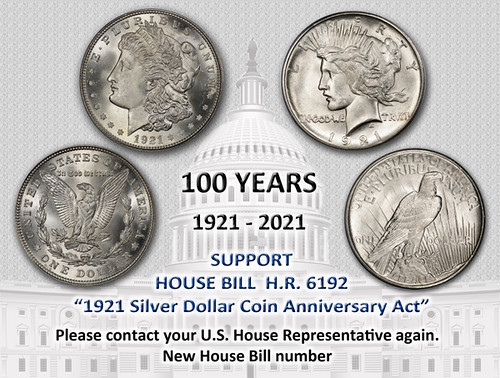
For more information on PAN, see:
https://pancoins.org/
JAMES MALONEBEACH: AMERICAN MEDAL OF THE YEAR
Mel Wacks submitted this press release from the (American Medallic Sculpture Association (AMSA) on the winner of their American Medal of the Year award. Thanks! See the article elsewhere in this issue about the winner's new book. -Editor
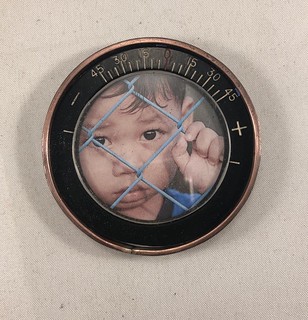 James MaloneBeach's medal "Suffer the Children" has won the coveted 2020 AMY (American Medal of the Year) award, sponsored by AMSA (American Medallic Sculpture Association). The announcement was made by Mel Wacks, chair of the committee of distinguished jurors ? Philip Attwood, President of FIDEM (Fédération Internationale de la Médaille d'Art); Ellen Feingold, curator of the National Numismatic Collection, Smithsonian Institution; Cory Gillilland, former Curator and Deputy Director of the National Numismatic Collection at the Smithsonian Institution; Barbara Gregory, editor of The Numismatist; Steve Roach, editor-at-large of Coin World; Dr. Alan Stahl, Curator of Numismatics, Princeton University; and Dr. Benjamin Weiss, member of the board of directors of Medal Collectors of America.
James MaloneBeach's medal "Suffer the Children" has won the coveted 2020 AMY (American Medal of the Year) award, sponsored by AMSA (American Medallic Sculpture Association). The announcement was made by Mel Wacks, chair of the committee of distinguished jurors ? Philip Attwood, President of FIDEM (Fédération Internationale de la Médaille d'Art); Ellen Feingold, curator of the National Numismatic Collection, Smithsonian Institution; Cory Gillilland, former Curator and Deputy Director of the National Numismatic Collection at the Smithsonian Institution; Barbara Gregory, editor of The Numismatist; Steve Roach, editor-at-large of Coin World; Dr. Alan Stahl, Curator of Numismatics, Princeton University; and Dr. Benjamin Weiss, member of the board of directors of Medal Collectors of America.
The voting was very close, with two runner-ups ? Dan Kraus's "Angus, Brookgreen Gardens Ambassador" and "Save our Planet" by Keiko Kuboya-Miura.
James MaloneBeach's medal "Suffer the Children" is a dramatic reminder of the suffering of thousands of youngsters who have been separated from their parents, who are seeking asylum in the United States. It is 2" diameter, made from mixed media. The medalist is willing to make a small number of similar pieces available to collectors for $250 plus shipping. MaloneBeach can be contacted at beachatbams@yahoo.com.
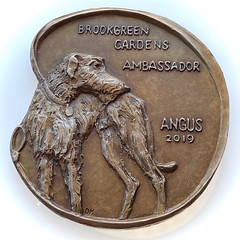 Dan Kraus's "Angus" 4 1/2" bonded bronze uniface medal is expected to be available for about $150 at the Brookgreen Gardens shop (www.shopbrookgreen.com). Angus was the name of one of Anna Hyatt Huntington's beloved Scottish Deerhounds ? and is the name of the newest Deerhound at Brookgreen Gardens.
Dan Kraus's "Angus" 4 1/2" bonded bronze uniface medal is expected to be available for about $150 at the Brookgreen Gardens shop (www.shopbrookgreen.com). Angus was the name of one of Anna Hyatt Huntington's beloved Scottish Deerhounds ? and is the name of the newest Deerhound at Brookgreen Gardens.
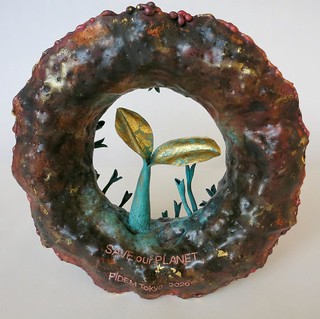
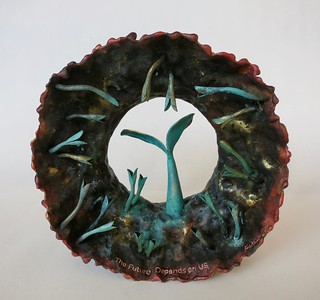
"Save our Planet" by Keiko Kuboya-Miura is 6" diameter, made from copper and gold foil. The medalist is willing to make a few duplicates for $2000 each; interested collectors can email keikokmny@gmail.com.
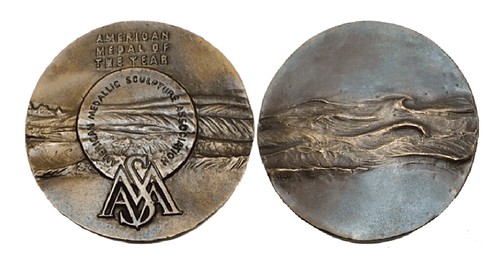
The AMSA American Medal of the Year was established in 2014
All of the 36 medal entries by over 20 medalists will be pictured in color in the next issue of the AMSA Members Exchange. To obtain this issue and all others published in 2020, you can join by sending $40 (U.S. and Canada) or $50 (elsewhere) to AMSA, P.O. Box 1201, Edmonds, WA 98020. The AMSA website is www.amsamedals.org .
VOCABULARY TERM: SUSPENSION
Dick Johnson submitted this entry from his Encyclopedia of Coin and Medal Terminology. Thanks! -Editor
Suspension. Affixing one medallic component to another – by loops, chains, jump rings, ribbons and other means – to form badges, decorations, collars, multipart pins and such. Suspension ranges from a simple pendant medal hung from a header to elaborate mechanics connecting parts of an exotic decoration or collar. Suspension is a form of mounting and creates the means whereby a medal of several parts can be worn. A medal that does not have any suspension mechanism and not intended to be worn is called a table medal. Generally a table medal is mounted for display, a medal to be worn is suspended for display.
Every medallic item with suspended elements to be worn has some form of attaching to a garment – by pin or clasp or stem and clasp on the back of the top element. Multiple elements serve a utilitarian purpose by providing several classes to any one event, thus the delegates from several states for example can be identified for one convention badge by having bars or headers with separate state names.
Multiple elements. As the convention badge developed as a popular medallic item at the end of the 19th century and the beginning of the 20th, more elements were added. Pendants were added to a header bar. Then bars were added between those two elements. Then a smaller pendant – called a drop – was suspended from the header. The more elements that could be designed into a total badge the more exclusive it became.
Any group within a larger group could be identified by the design or wording on these elements. Officers, VIPs or convention officials could be noted by their distinguishing elements. Delegates from each state could have their own bar or element.
Local pride and boosterism appeared in medallic form as the sponsoring organization would tout its city and area's features. Everything from the cannon in the public square to the Statue of Liberty appeared on the medallic elements.
Also, the drops became quasi-relic items as they were made of some local manmade or natural product, as seashells, nuts, or even lumps of coal!
Decorations. However common the convention badge was, orders and decorations were the exception. They were made in precious metal and often jewel encrusted but presented their own suspension problems. Their collar was the most extensive medallic item with many repeated elements with fastening between the elements until it formed a chain long enough to go over and around the recipient's head with a pendant to rest on the chest.
Each of the links in the collar were diestruck but with loops to connect to the next link. The links were often of differing sizes and shapes which when seen together emphasized the theme of the pendant.
Suspension systems. To connect these varied medallic elements a system of loops, rings and chains were employed by the original medal designer. When these were manufactured, the loops had to face a way in which the adjacent loop or ring would connect. An odd number of links had to connect two elements on the same plane (see drawing).
The spacing between these elements had to be considered in the design. If a drop was intended, a chain had to be connected between the header and the first element long enough to allow room for the drop. Thus the size and the number of links in a chain were important.
Simple loops. Loops are applied to medallic elements as the most popular means of suspension. A single loop is applied to the top of a pendant medal; this can be attached, for example, to a neck chain with a jump ring, whose ends are not welded together, but can be spread apart to pass through the eye of the loop and a link of the neck chain. A disadvantage of a single loop, however, is its tendency to flip over during wear, its reverse is displayed as often as its obverse. To prevent this two loops are affixed to the top of a pendant medal, each with a jump ring. See illustrations.
When loops are affixed to both header plus pendant and a single jump ring cannot easily connect both, then a chain must be used (illustration 3). A drop would require a third loop affixed to the bottom center of the header where the drop hangs loose. See loop.
Looking for the meaning of a numismatic word, or the description of a term? Try the Newman Numismatic Portal's Numismatic Dictionary at: https://nnp.wustl.edu/library/dictionary
Or if you would like a printed copy of the complete Encyclopedia, it is available. There are 1,854 terms, on 678 pages, in The Encyclopedia of Coin and Medal Technology. Even running two a week would require more than 19 years to publish them all. If you would like an advance draft of this vital reference work it may be obtained from the author for your check of $50 sent postpaid. Dick Johnson, 139 Thompson Drive, Torrington, CT 06790.

DIME NOVELIST NED BUNTLINE
Bibliophiles who haven't already done so may want to sign up for The Writer's Almanac emails or podcast. The Friday, March 20, 2020 edition discusses the foundation of the Republican Party, Harriet Beecher Stowe's novel Uncle Tom's Cabin, the Roman poet Ovid, Albert Einstein's publication of his Theory of General Relativity and trashy dime novelist Ned Buntline, who made Buffalo Bill Cody famous. -Editor
Buntline's life was one big adventure, and he didn't slow down even after he became wealthy and famous. He fought in the Everglades in the Second Seminole War, and was an officer in the Civil War until he was given a dishonorable discharge for drunkenness. He went around preaching temperance at lectures, usually while drunk. He incited several riots. He got in plenty of trouble with women too — he was married seven times and was jailed for bigamy. At one point, he was flirting with a married teenager named Mary Porterfield. Her husband, Robert, challenged Buntline to a duel, which of course he accepted, and he killed Robert Porterfield. The angry townspeople attempted to lynch Buntline, and in fact they strung him up hanged him from an awning post. At the last minute, his friends cut the rope and he managed to survive.
To read the complete article, see:
The Writer's Almanac for Friday, March 20, 2020 (http://www.garrisonkeillor.com/radio/twa-the-writers-almanac-for-march-20-2020/)
I didn't think there was any numismatic connection here, but guess what? Thanks to Joel Orosz to alerting me to Buntline's friendship with none other than numismatic dealer and publisher Ebenezer Locke Mason. Here's an excerpt from a Winter 1999 Asylum article by D.R.R. Pepper titled "Eben Locke Mason, Jr. - A Double Life". -Editor
As recently as the early 1990s, when I first saw his name in print, I had no idea that Eben Locke Mason was a numismatist. I am not one myself. I became interested in Mason for reasons that had nothing to do with numismatics. His conspicuous involvement in that area was revealed to me by a single entry in the gargantuan National Union Catalog, or NCJC. At the time I wanted to learn more about Mason because I was particularly interested in a good friend of his, Edward Zane Carroll Judson... a flamboyant author/adventurer, better known by his most famous penname, Ned Buntline. Sometimes called "King of the Dime Novelists," Buntline was born in the early 1820s (the exact year is uncertain). He probably met Mason during the 1850s, in connection with one of his pet projects. It is said that Mason was associate editor of Ned Buntline's Own, a journal Ned published from time to time, from the 1840s to the 1860s.
Mason is quoted, at length and quite respectfully, by Ned's first biographer Frederick E. Pond. He knew Ned, and apparently Mason as well, in the 1870s and early 1880s.
Mason must have paid more than one visit to "Eagle's Nest," the commodious Stamford house where Squire Edward Judson and his small family lived. On July 9, 1888 E. Locke Mason was married - at Stamford - to Ned's widow, Mrs. Anna Fuller Judson. I learned this from an excellent biographical sketch of Buntline by Albert Johannsen, a historian of dime novels.
Records of the town clerk in South Kortright, N.Y. (a township adjacent to Stamford), give vital statistics from bride and groom. Anna, age 38, was the daughter of J.W. Fuller and Sarah Buell Fuller, both of Stamford. The groom, Eben Locke Mason, age 52, was a coin dealer in Boston and this was his third marriage. He had been born in Portland, Me., the son of Eben Locke Mason (Sr.) and Mary Scott Cobbe Mason. His precise birth date, which I've been unable to determine, would have been either in the latter months of 1835 or the early months of 1836.
For an authoritative discussion of E. Locke Mason's numismatic career I refer readers to John W. Adams' biographical sketch, "Ebenezer Locke Mason," in volume one of United States Numismatic Literature (George Kolbe, 1982).
I also understand that John Lupia has been working on a manuscript on the life of Ebenezer Locke Mason, Jr. -Editor
To read the complete article on the Newman Numismatic Portal, see:
https://nnp.wustl.edu/library/book/429?page=8
EBENEZER LOCKE MASON, JR. (1826-1901)
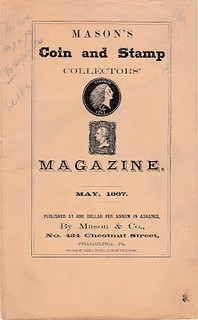 Ebenezer Locke Mason, Jr., did not like the name Ebenezer and preferred to be called Eben, or Edward, or Ned. The majority of the documents of his life use these various names in place of Ebenezer.
Ebenezer Locke Mason, Jr., did not like the name Ebenezer and preferred to be called Eben, or Edward, or Ned. The majority of the documents of his life use these various names in place of Ebenezer.
Along his unusual career he evolved from being a tailor and saddler, to a poet, dime novelist and journalist, activist in the Order of the Lone Star, showman, entertainment agent, aeronautic engineer and pilot, Civil War soldier, United States Special Agent for the Department of the Interior who recovered the stolen Washington relics, musical song writer and publisher, photographer for carte de visite, curio shop owner, occasional book publisher, coin and stamp dealer, to the first full-time coin and stamp dealer who published a monthly coin and stamp magazine that ultimately folded after twenty-four years though he continued his coin business until his death as one of America's leading numismatic authorities.
There was never a dull moment in the life of Ebenezer, who was a high energy, driven and highly industrious and intellectually active personality. He knew many famous Americans including one of his oldest friends Edward Zane Carroll Judson popularly known as Ned Buntline, Buffalo Bill Cody, Professor Thaddeus Lowe, President Abraham Lincoln, Joseph J. Mickley.
Among numismatists he is best known for his coin magazine, photographic gallery of American coin collectors, coin price lists, contributions to coin journals and books, public debates and coin auction catalogs. However, Ebenezer is also well known among the students, scholars and researchers of magic and ventriloquism for his work in this field. He is also well known as the editor, personal friend, and traveling companion of Ned Buntline, a showman and American original, who made wild west and rifle shooting shows, and Buffalo Bill famous. American literature students, scholars and researchers know him for his colorful stories published in Ned Buntline's Own, under his favorite nom de plume, "Our Ned". During the presidential election of 1864 Ebenezer continued publishing songs, music and lyrics under the pseudonym "Our Ned," and are very famous to American historians, especially his Lincoln Songster. He is also famous as a pioneer balloonist and was active as an aeronaut during the Civil War. He is also famous as the man who was hired by the Department of the Interior to restore the stolen Washington relics during the Civil War, and did it.
Working on a traveling exhibition he purchased thousands of coins throughout the eastern seaboard of the United States and Canada and resold them to two coin dealers, A. C. Kline, and Edward Cogan, and to the collectors Dr. Montroville Wilson Dickeson, and Joseph Napoleon Tricot Levick, all fellow residents of Philadelphia. At last, Mason became a full-time coin dealer opening a shop at 434 Chestnut Street, Philadelphia, where he published a monthly magazine devoted to the hobbies of coins, postage stamps and other collectibles such as minerals, rare books, autographs, paper money, Indian relics, fossils, memorabilia and anything considered a novelty or curiosity fashionable at that time for hobbyists forming a collectors' cabinet. He began publishing his hobby magazine during the early Reconstruction Period in April 1867, on the second anniversary of the end of the Civil War.
There is much more in the online article (and far more yet in John's unpublished manuscript), but here's a segment describing how Mason came to step away from numismatics and into show business with his friend. -Editor
The first lacuna appears to be attributable to Ebenezer's involvement as manager of Ned Buntline's (Edward Zane Carroll Judson) theatrical tour, "The Scouts of the Prairie, written by Ned and starring himself, along with Buffalo Bill Cody and others." However, this is not exclusively the case. First, the show did not open in December 1872 at Philadelphia, but rather, in Chicago. So, Ebenezer was not immediately drawn into the management of the show but later on. As he tells us in his own words :
"in the winter of 1872 and '73, business troubles commenced throughout the United States. The subsequent failure of Jay Cooke, added fuel to the flame, and the underpinning of wealth, moderate incomes, and remunerative labor, was knocked aslant, causing ruin, wretchedness and want in many households. Of course, our favored hobby, numismatics, suffered in common during the general wreck and shrinkage, which occurred. Coin dealers "caved" in common with other trades, numismatic and other scientific journals went "to the wall," and not finding support on that "lay," sputtered and weakened and finally "gave up the ghost." In fact, there wasn't a "ghost of a chance" for the bread winners of our country "to make two ends meet," unless we except our friend Cook, of Boston, who combined the business of cobbling and coin dealing. Is it any wonder that Mason's Coin Collectors' Magazine bowed to the inevitable? We think not."
The failure of Jay Cooke & Co., on September 18, 1872 precipitated the Stock Market crash of 1872 to 1873. Coin collectors no longer could afford to buy coins or coin periodicals and Ebenezer was hit with that loss necessarily seeking secondary sources of income outside the scope of numismatics.
To read the complete article, see:
MASON, EBENEZER LOCKE, JR (http://www.numismaticmall.com/numismaticmall-com/mason-ebenezer-locke-mason-jr)
NUMISMATIST OF THE YEAR MARK BORCKARDT
Congratulations to Mark Borckardt of Heritage on being named the ANA's Numismatist of the Year! Here's the press release. -Editor
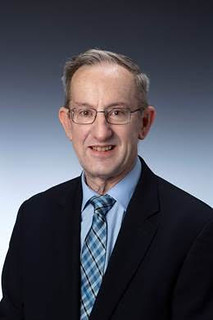 Heritage Auctions Senior Numismatist Mark Borckardt received one of the highest individual honors within the hobby when he was named 2020 Numismatist of the Year by the American Numismatic Association.
Heritage Auctions Senior Numismatist Mark Borckardt received one of the highest individual honors within the hobby when he was named 2020 Numismatist of the Year by the American Numismatic Association.
"This honor is important to me," Borckardt said. "This award validates my numismatic work over many years."
A numismatist for 40 years, Borckardt has been at Heritage Auctions for 16 years. He was nominated for the award by Kagin's numismatist David McCarthy.
First presented in 1995, the Numismatist of the Year Award was established "to recognize individuals within the numismatic community who have demonstrated long-term leadership in the field and to the Association," according to money.org, the ANA website.
"Nominees must be ANA members who have clearly demonstrated outstanding leadership in the field of numismatics spanning a career of at least 20 years. Their accomplishments should have significant impact in the numismatic community."
The list of previous winners during the first 25 years in which the award was bestowed includes some of the most notable names in the history of numismatics, including Eric P. Newman, Q. David Bowers, Chester Krause, Kenneth Bressett, Mark Salzberg, Ron Guth and Clifford Mishler, among many others.
The ANA will publicly honor Borckardt and its other award winners at the ANA Worlds' Fair of Money Aug. 4-10 in Pittsburgh.
WHAT ARE ELECTROTYPES?
Lief Davisson submitted this primer on electrotypes, inspired by an amazing lot in the upcoming Davisson's sale. Thanks! -Editor
Invented in 1838, the electrotyping process involves coating a mold of the object being duplicated in a conductive material, graphite, then connecting it to a wire and running a current through it while suspending it in an electrolyte solution along with a copper anode. The copper dissolves from the surface of the anode and is deposited on the surface of the graphite mold. This process was used extensively to create plates for letterpress printing and to create accurate replicas of works of art, among other uses. It was particularly suited to creating high quality coin replicas. When duplicating coins the process creates a uniface replica of one side of the coin, which could be joined to a copy of the other side and the edges smoothed to create a more accurate replica. The copper shell was also often gilt to represent silver or gold coins more accurately.
Electrotypes were widely produced by seal maker Robert Ready (1877-1901) and his sons for sale by the British Museum between 1859 and 1931, using examples from the Museum's own extensive collection. The Museum displayed these, as well as making them available for purchase and for education. Electrotypes, while convincing, are usually fairly straightforward to distinguish from the actual pieces by examining the edge for a seam, comparing the weight to an actual piece, or by a stamp of RR, R, or MB on the edge (which stand for Robert Ready, one of his sons, or the Latin name for the British Museum respectively).
Barclay V. Head (1844-1914) began work at the British Museum at the age of 20 and ultimately became head of the Department of Coins and Medals. Among his extensive output of research and catalogs he summarized Ready's work, publishing a Guide to the Select Greek Coins Exhibited in Electrotype in the Gold Ornament Room in 1872 and a subsequent edition (1880) that also included Roman Coins in Electrotype in its title. The latter edition is available as a reprint.
Electrotypes are an approachable and highly accurate way to represent coins that are otherwise unobtainable for most (or all) collectors. Though individual electrotypes (with sides joined or separate) can be found for sale or in auctions, comprehensive sets and electrotypes of particularly rare coins can command high prices. Of added interest are electrotype collections in contemporary or accurate displays, such as mounted on a board for schools (uniface replicas can be mounted so both obverse and reverse are visible), or in a classic display cabinet. Davissons Auction 39 features a particularly comprehensive collection in a late 19th century bespoke cabinet.
Here's an excerpt from the lot description. -Editor
Lot 339: Robert Ready British Museum Replica Cabinet
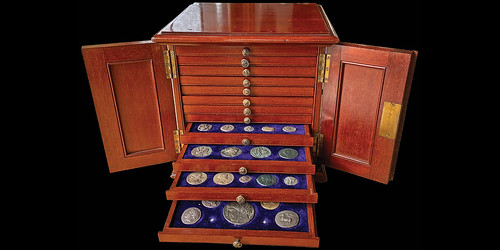
A COLLECTION OF BRITISH MUSEUM REPLICAS. Two-hundred-twenty-nine electrotypes of the finest Greek coins from the British Museum holdings in a late 19th century bespoke cabinet.
 Robert Ready and his sons were seal makers hired by the British Museum in the late 1850's to produce copies of some of the finest ancient coins in the British Museum. Using an electrotyping technique invented in 1838 they produced uniface replicas of actual coins in the Museum holdings. This electrotyping process is explained below. The Museum displayed these as well as making them available for purchase and for education.
Robert Ready and his sons were seal makers hired by the British Museum in the late 1850's to produce copies of some of the finest ancient coins in the British Museum. Using an electrotyping technique invented in 1838 they produced uniface replicas of actual coins in the Museum holdings. This electrotyping process is explained below. The Museum displayed these as well as making them available for purchase and for education.
Barclay V. Head (1844-1914) began work at the British Museum at the age of 20 and ultimately became head of the Department of Coins and Medals. Among his extensive output of research and catalogs he summarized Ready's work, publishing a Guide to the Select Greek Coins Exhibited in Electrotype in the Gold Ornament Room in 1872 and a subsequent edition (1880) that also included Roman Coins in Electrotype in its title. I believe the 1872 work was the basis for the numbering and layout of this collection. The latter edition is available as a reprint and we will include it with the set on request.
The mahogany cabinet is 8 1/2 inches deep, 9 inches wide, and 8 ½ inches high with brass handles on the sides and doors with a latch and key. The woodwork is of the highest quality with dovetail joints, pulls with different heads from Greek coins on them, and numbered tailor-fitted depressions in velvet lined drawers that conform to the size and shape of each piece. The coin replicas were purchased joined together from the Readys with "R R" stamped on the side across the seam. The set is exceptionally well preserved.
The value of this set, $20,000 to $25,000, reflects the exceptional quality of this 19th century cabinetry and the fact that all the pieces are joined and intact from the era with the RR stamp on the edge, as well as recent prices Ready electros have achieved. Several years ago CNG sold "A Mounted Set of Twenty-six British Museum Electrotypes…each uniface with attached mounting pins…mounted on velvet-lined wood" for $3250. In November 2019 Baldwins of St. James's realized a total equal to $17,000 for what they described as "A large collection of late 19th/early 20th Century electrotypes of ancient Greek and Roman gold silver and copper coins, most comprise separate obverses and reverses and are placed side-by-side in a deep front, stacking Lincoln mahogany cabinet (handles missing)."
Wow! An amazing collection with a connection to numismatic literature, and even more amazing to find it intact over a century later. -Editor
To read the complete lot description, see:
Printed Auction 39 Lot 339 (https://davcoin.com/lot/printed-auction-39-lot-339)
To read the earlier E-Sylum article, see:
SELECTIONS FROM DAVISSON'S AUCTION 39 (https://www.coinbooks.org/v23/esylum_v23n11a20.html)

HERITAGE 2020 CENTRAL STATES SALE SELECTIONS
The upcoming Heritage sale has been moved as a result of the 2020 Central States show cancellation. But even those who can't travel can view and bid from afar. Here are a few lots that caught my eye. -Editor
1791 Washington President Cent
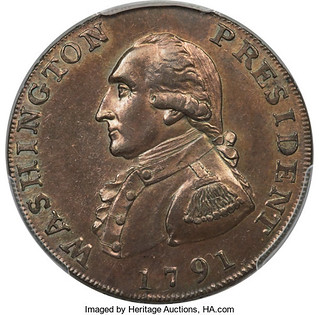
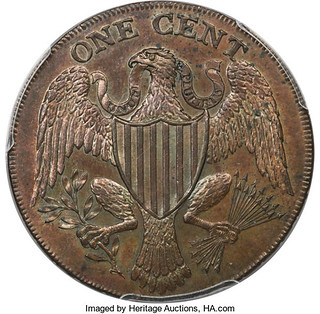
This item is currently being reviewed by our catalogers and photographers. A written description will be available along with high resolution images soon.
The lot description for this piece is still being drafted. Stay tuned. That's part of the fun of an upcoming sale. With items being made public while still under evaluation, the public has a chance to see and comment on the material, enabling the catalogers to catch things they might otherwise miss. -Editor
To read the complete lot description, see:
https://coins.ha.com/itm/colonials/1791-cent-washington-large-eagle-cent-ms64-brown-pcgs-baker-15-w-10610-musante-gw-15-r2/p/1314-208081.s
1811 Half Cent
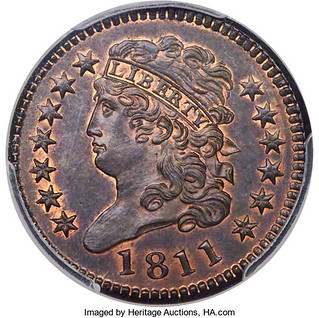
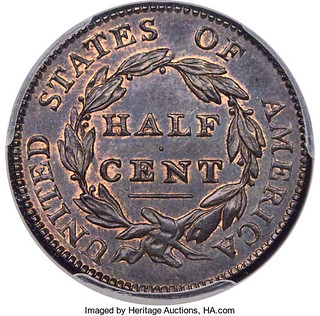
The 1811 Classic Head Half Cent
According to Mint records, only 63,140 Classic Head half cents were struck in 1811, a small mintage for this series, which had seen a production of more than 1 million pieces just two years before. The coins were all delivered on July 9, and no more half cents were produced until 1825. In American Half Cents, the "Little Half Sisters", Roger Cohen speculates the small mintage in 1811 and the long gap in production might be attributed to a shortage of planchets. Apparently, the Mint's supply of half cent blanks ran out in 1811 and it was difficult to resupply in following years, due to the economic and political fallout of the War of 1812.
Two die varieties that share a common reverse are known for the date. This coin represents the C-1, B-1 variety, with a Wide Date that shows the numerals 1 and 8 widely separated and the E in LIBERTY repunched over a smaller E. Although the Classic Head half cents did not circulate as extensively as their earlier Draped Bust counterparts, most examples of the 1811 C-1 are well-worn and Ronald Manley notes the variety is seldom seen in grades above the Fine level. The 1811 C-1 is more elusive than the C-2 variety and Bill Eckberg (2019) estimates the surviving population at 150 examples in all grades.
The 1811 was a collector favorite from the earliest days of the hobby and by the late 1850s, when coin collecting first became widespread in this country, the issue was already known as a sought-after rarity. In his American Numismatical Manual (1859), Montroville W. Dickeson described the 1811 as "rare and valuable, as they are to be found in few cabinets." Examples began appearing at auction as early as lot 106 of the A.C. Kline Sale (Moses Thomas & Sons, 6/1855). The lot realized $.75, a strong price at the time. The present coin established the current prices realized record for this issue when it sold for a remarkable $1,121,250 in the Missouri Cabinet in January 2014.
A great classic coin. -Editor
To read the complete lot description, see:
1811 1/2 C Wide Date, C-1, B-1, Low R.4, MS66 Red and Brow... (https://coins.ha.com/itm/half-cents/1811-1-2-c-c-1-b-1-low-r4-ms66-red-and-brown-pcgs-cac-pcgs-35240-/p/1314-109006.s)
1858 Proof Liberty Eagle
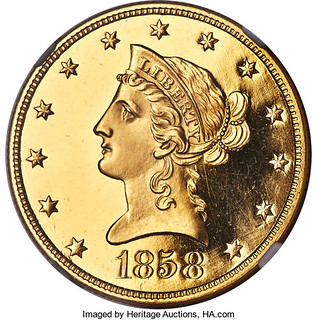
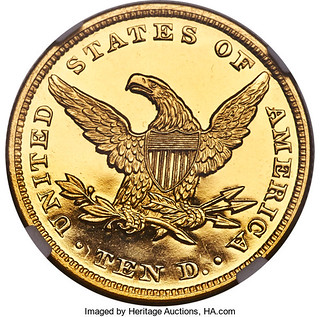
1858 $10 PR64 Ultra Cameo NGC. CAC. JD-1, High R.7. Ex: Trompeter. The Philadelphia Mint began its program of commercial proof coin offerings in 1858. Mintage figures for proofs were not recorded that year, but experts agree no more than four to six proof Liberty eagles were produced. Most of the coins we know about today were issued as part of six-piece gold proof sets, but it is possible that a few examples were sold singly, as well. Only four examples have been reliably reported, and we believe three of those coins are included in institutional collections at the Smithsonian Institution, the American Numismatic Society, and the Connecticut State Library (see roster below). The magnificent coin offered here is the only example available to collectors, making this lot an extremely important opportunity for series specialists and Registry Set enthusiasts.
The Present Coin
We can trace the history of the present coin all the way back to the Mint in 1858. Prominent Massachusetts collector George Seavey purchased it as part of a complete gold, silver, and minor proof set that year. Seavey updated his remarkable collection in this fashion every year until he sold his numismatic holdings to millionaire Boston collector Lorin G. Parmelee in 1873. Parmelee retained the proof set intact until he sold his collection in 1890. The gold proof set was dispersed in the Parmelee sale, with the eagle, half eagle, and quarter eagle going to gold and pattern specialist William H. Woodin, who later became Secretary of the Treasury, under President Franklin Delano Roosevelt. Super collector Virgil Brand acquired this coin at the 1911 sale of Woodin's collection, with Lyman Low acting as his agent. Brand retained this piece until his death in 1926 and it eventually passed to his brother Armin, who sold it to Wayte Raymond in 1935. It next appeared in F.C.C. Boyd's World's Greatest Collection and then in the fabulous collection of Dr. Charles W. Green. Fort Worth coin dealer B. Max Mehl cataloged Green's Collection and described this piece in a two-page lot description, which we quote in part below:
"Perfect brilliant proof! By far the rarest of all U.S. $10.00 Gold Pieces and one of the rarest of all U.S. Gold Coins ... the specimen here offered is the only brilliant proof specimen available for purchase ... This great coin in its magnificent condition, is in point of actual rarity, almost on a par with the 1822 Half Eagle ... Its addition to a collection of U.S. Gold Coins would have the same effect as the addition of an 1804 Silver Dollar to a Silver Collection. It would greatly enhance the interest and value of the balance of the collection."
Amon Carter, Sr. purchased the coin at the auction, and it remained in the Carter Family Collection until that spectacular numismatic gathering was sold in January of 1984. This coin realized $121,000 at the Carter sale, a remarkable price for any coin at the time, to David Akers, acting as agent for proof gold specialist Ed Trompeter. It has not been publicly offered since. The owner of the Duquesne Collection purchased this coin privately via Heritage Auctions, along with many other coins from the Trompeter Estate, in 1998.
An amazing coin with an equally amazing provenance. -Editor
To read the complete lot description, see:
1858 $10 PR64 Ultra Cameo NGC. CAC. JD-1, High R.7. (https://coins.ha.com/itm/liberty-eagles/eagles/1858-10-pr64-ultra-cameo-ngc-cac-jd-1-high-r7-pcgs-98794-/p/1314-225001.s)
1872 Seated Dollar in Copper
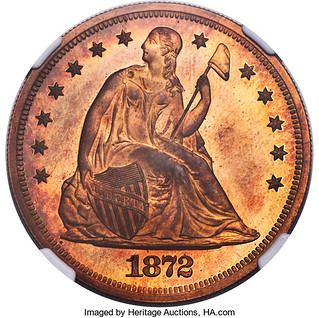
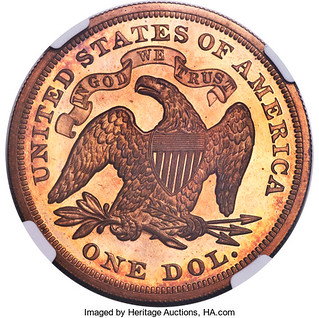
1872 Seated Dollar in Copper
Judd-1210, PR66? Red and Brown Cameo
1872 $1 Dollar, Judd-1210, Pollock-1350, High R.7, PR66? Red and Brown Cameo NGC. The regular Seated Liberty With Motto design, the motto boldly doubled as seen on regular issue proofs dated 1872 and 1873. Struck in copper with a reeded edge. The 1872 copper dollars from the regular dies were not trial pieces as often recorded, but instead were part of off-metal coinage sets that the Mint marketed to contemporary collectors. The off-metal pattern sets were coined in both copper and aluminum (Judd-1211). It is doubtful that many sets were actually purchased by collectors, as only two examples of the copper dollar are known today.
I've always had a soft spot for patterns. Very cool piece. -Editor
To read the complete lot description, see:
1872 $1 Dollar, Judd-1210, Pollock-1350, High R.7, PR66 (https://coins.ha.com/itm/patterns/1872-1-dollar-judd-1210-pollock-1350-high-r7-pr66-s-red-and-brown-cameo-ngc/p/1314-220003.s)
SLOVAKIA VILLAGE CHURCH COIN FIND
Found via The Explorator newsletter is this article on a neat find in a village in Slovakia. -Editor
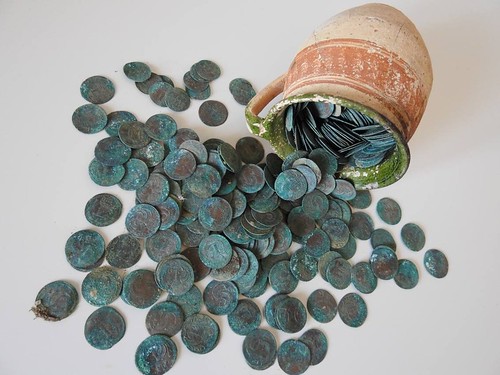
It was probably hidden by a priest who told no one it was there.
While removing the floor of the church in Obišovce near Košice, the foundations of the old church were uncovered. After this discovery, the archaeological company Triglav conducted research that took place at the beginning of February 2020, the Regional Monuments Board Košice reported.
During this work, the archaeologists discovered a unique treasure trove of coins, kept in a ceramic mug and covered with a small stone slab, under the original stone floor close to the western entrance of the church.
The hoard consists of more than 500 coins, most of them mining salary plates. The silver coins were wrapped separately, probably in linen clothing. The coins date the treasure to 1702 at the earliest.
The mining salary plates and coins were minted in Košice, Smolník and Banská Štiavnica, proof that believers journeyed from those regions and probably left them as charitable gifts. There were Polish coins amongst the treasure as well.
The old church was established in the time of the Rennaisance and it was dismantled in the middle of the 19th century to be replaced by the current church.
To read the complete article, see:
Archaeologists unearth treasure in Obišovce (https://spectator.sme.sk/c/22359500/archaeologists-unearth-treasure-in-obisovce.html)
GRAND DUCAL SAXON MONEY ORDER
Geldscheine Online is an email newsletter from Germany for banknote collectors. One regular feature presents banknotes from private collections. I enjoyed this note from the Gerhard Reichert collection, described as a "Grand Ducal Saxon money order from 1 thaler from June 22, 1870." Here's a Google translation of the description and an image of the back of the note showing a boy with a coat of arms and a falcon next to an oak and lion. -Editor
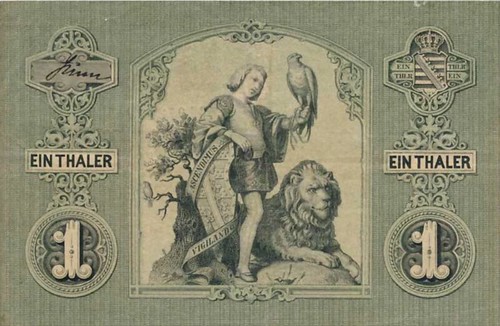
In the Grand Duchy of Saxony-Weimar-Eisenach (from 1903 Grand Duchy of Saxony), state paper money was issued in the form of cash instructions from 1847 to 1870. In addition, the Weimar Bank issued its own banknotes from 1854 to 1874, which circulated in the Thuringian Grand Duchy, which was governed by representatives of the Albertine line of the House of Saxony.
To read the complete article, see:
Aus privaten Sammlungen: Großherzoglich sächsische Kassenanweisung zu 1 Thaler von 1870 (https://www.geldscheine-online.com/post/aus-privaten-sammlungen-gro%C3%9Fherzoglich-s%C3%A4chsische-kassenanweisung-zu-1-thaler-von-1870)
To subscribe to the Geldscheine Online newsletter, see:
Geldscheine Online (https://www.geldscheine-online.com/newsletter-anmeldung)
NEW YORK RESTAURANTS OFFER BONDS
There may be a new numismatic collectible to come of this - times of financial stress always lead to new substitutes for money. This Wall Street Journal article discusses how New York City area restaurants are hoping a "bond offering" will save their businesses. -Editor
As concern among New York City restaurants grows about the financial toll the novel coronavirus is taking, some are trying to offset their losses with a new initiative: selling "dining bonds."
The program, created by local hospitality publicists and consultants Steven Hall and Helen Patrikis, is designed so that restaurants can offer gift certificates—"bonds"—at a reduced price for redemption at full value on a later date.
The idea is to provide another stream of revenue at a time when restaurants have been forced by the state to limit their business to takeout and delivery orders for the foreseeable future. Some establishments have opted to close altogether during the pandemic.
"Even if this little bit of money helps a restaurant keep one staff member paid, then it's worth it," said Mr. Hall.
Under the bonds program, each restaurant can set its own terms, said Mr. Hall and Ms. Patrikis. In a possible scenario, a restaurant would sell a $100 certificate for $75, but the certificate couldn't be redeemed for at least 30 days.
The program is being promoted through a newly launched website, supportrestaurants.org. Customers must contact the individual restaurants, to purchase the certificates, since different establishments have different platforms or methods for selling them.
To read the complete article (subscription required), see:
New York Restaurants Hope ‘Bond Offering' Will Save Businesses (https://www.wsj.com/articles/new-york-restaurants-hope-bond-offering-will-save-businesses-11584476525)
READERS RUSH THEIR LIBRARIES FOR BOOKS
Forget toilet paper. Bibliophiles want to stock up on BOOKS. A Wall Street Journal article discusses how readers descended on their local libraries in advance of the coronavirus shutdown. -Editor
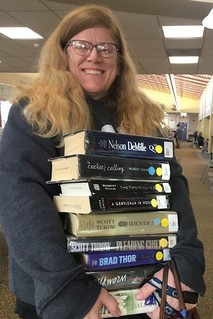 More than a dozen people were waiting outside the public library here shortly before the 9 a.m. opening Saturday.
More than a dozen people were waiting outside the public library here shortly before the 9 a.m. opening Saturday.
Among them was Mary Ann Gabriel, a retired accountant, wearing a pink tracksuit.
"People act like it's the end of the world!" she said in a tone suggesting that she was unconvinced. Still, precautions were in order.
It was less frantic than the scenes at ransacked supermarkets, but Ms. Gabriel is part of a nationwide rush for books, CDs, and DVDs at public libraries that began closing over the weekend to deter spreading of the coronavirus.
Librarians across the country promised to maintain their digital services, including online access to electronic books and research databases. The Indian Trails Public Library in Wheeling, Ill., initially pledged to provide books through a drive-up window but then slammed that shut as contagion worries mounted. Others, lacking drive-up windows, said they might deliver books at the curbside.
Ruthie Maslin, director of the Madison County Public Library in Kentucky, which has branches in Richmond and Berea, said her staff is preparing to put books in lockers outside the libraries. "People could call, we could disinfect the books and the locker, they could come and get the books," Ms. Maslin said. Two volunteers already have offered to deliver books to homes, she said.
Those who rely on the library for internet access could still get Wi-Fi service outside the building. "Come to the parking lot," Ms. Maslin suggested.
Public libraries in major cities including New York, Los Angeles and Atlanta are closed. All Library of Congress buildings and facilities are closed to the public.
"Closing libraries is something that's very uncomfortable for us," said Ramiro Salazar, director of the San Antonio Public Library and president of the Public Library Association, which represents librarians across the U.S. and abroad. "At some point we will return to normal," Mr. Salazar said. "That's my opinion."
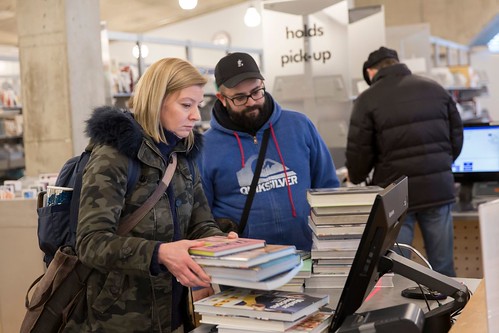
Seattle Library before coronavirus closure
In Mt. Lebanon, a prosperous suburb south of Pittsburgh, the library announced late Friday afternoon it would close for at least a month. Saturday was the last chance to raid the shelves. At least one person had checked out more than 100 items, said Robyn Vittek, director of the library. Some tottered out with beach bags full of books. Ms. Gabriel limited herself to six, including novels by Lisa Scottoline and Stuart Woods.
In all, 8,530 items were checked out Saturday, more than eight times the library's daily average. Saturday's total accounted for roughly 6% of the number of items available for checkout. By the end of the day, nearly all of the books displayed on tables near the checkout desk were gone. The DVD collection looked severely depleted.
The library director, Ms. Vittek, joined her staff on the front line, at the checkout desk. "You don't have to worry," she told people checking out books. "There won't be any late fees while we're closed."
Peggi Kelley, a librarian, looked exhausted as she finished her shift. "This is what Black Friday must be like at Walmart, " she said.
Another librarian, Sharon Bruni, was relieved to find that people would rush to stock up on books, not just tuna fish and toilet paper. "It's unreal," she said, "but it's so good."
On their way out of the library, many people paused at a wall-mounted dispenser for a free shot of hand sanitizer.
To read the complete article (subscription required), see:
Latest Hot Spot for Coronavirus Hoarders: The Public Library (https://www.wsj.com/articles/latest-hotspot-for-coronavirus-hoarders-the-public-library-11584464897)
LOOSE CHANGE: MARCH 22, 2020
Here are some additional items in the media recently that may be of interest. -Editor
Charles Barkley Selling 1996 Olympic Gold Medal
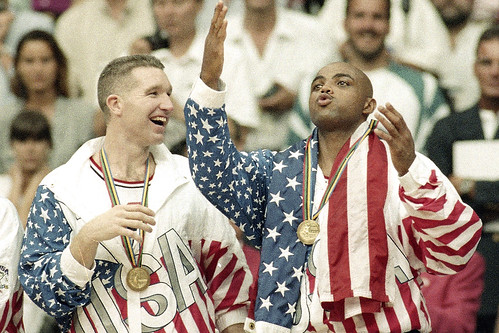
Chris Mullin and Charles Barkley, 1992
Charles Barkley is cleaning out his house in order to build homes for others.
Earlier this month, the NBA Hall of Famer and sports commentator, 57, announced that he intends to clear his stock of athletic memorabilia for auction, with the proceeds going toward constructing affordable housing in his hometown of Leeds, Alabama.
According to CNN, Barkley is selling his 1996 Olympic gold medal (he also earned one in the 1992 games, which he's saving for his daughter to keep), his 1993 NBA MVP trophy, among other accolades and items from his storied career.
To read the complete article, see:
Charles Barkley Auctioning Olympic Gold Medal to Build Affordable Housing in His Alabama Hometown (https://people.com/sports/charles-barkley-auctioning-olympic-gold-medal-to-build-affordable-housing-in-his-alabama-hometown/)
Murder in the Bookshop
For the bibliophiles (and anyone looking to kill some time reading), here's a great article about book-collecting crime novelist Carolyn Wells. -Editor
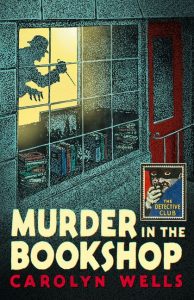 Cruise the tables at antiquarian book fairs and the name Carolyn Wells is bound to catch your eye sooner or later, likely on a garish paperback with a title like The Radio Studio Murder or The Roll-Top Desk Mystery. Little known today, Wells wrote as many as 167 books, of which approximately 82 are mysteries, beginning at the turn of twentieth century and continuing into the early 1940s.
Cruise the tables at antiquarian book fairs and the name Carolyn Wells is bound to catch your eye sooner or later, likely on a garish paperback with a title like The Radio Studio Murder or The Roll-Top Desk Mystery. Little known today, Wells wrote as many as 167 books, of which approximately 82 are mysteries, beginning at the turn of twentieth century and continuing into the early 1940s.
One of her most famous is Murder in the Bookshop (1936), which was revived by London's Detective Club Crime Classics series in 2018 and will be available in the U.S. this month via HarperCollins. Featuring her beloved detective, Fleming Stone, who stars in 61 of her novels, its popularity probably has less to do with what Curtis Evans in the introduction to the new edition calls "the resurgence of popular interest in vintage mystery fiction," and more to do with how well Wells knew this insular world. She was a die-hard book collector whose "outstanding" collection of early Walt Whitman editions was donated to the Library of Congress upon her death in 1942.
A delicious anecdote relayed by octogenarian book collector Edward Naumburg, Jr., in 1987 bears this out. He recalls a time in the early thirties when he visited At the Sign of the Sparrow, the rare bookshop of New York City's Alfred Goldsmith, who happened at the time to be on the phone with Wells. She had called to ask about a good getaway technique for one of her characters. Goldsmith answered, "Let him jump out of the backroom window into the yard." When he hung up, he boasted to his client that the author is writing a mystery about a bookshop, "and she's visualizing this store for the killing."
It wasn't bluster. By that time, Wells and Goldsmith were old friends. When she decided, nearly two decades before, on a whim spurred by two collector friends, to expend her ample bank account buying rare Whitman editions, she relied on Goldsmith to guide her acquisitions. In her 1937 memoir, The Rest of My Life, she refers to book collecting as a "wild fancy" and breezily recounts buying two copies of every book she wanted, as well as signed copies, manuscripts, photos, letters, and postcards; she yearned for a lock of the poet's hair, but never got one. "I know of no Whitman item that I do not possess," she eventually concluded.
To read the complete article, see:
CAROLYN WELLS, IN THE LIBRARY, WITH A REVOLVER (https://crimereads.com/carolyn-wells-in-the-library-with-a-revolver/)
U.S. Mint Runs Out of Silver Coins
This March 12, 2020 Wall Street Journal article shows how the coronavirus panic may have boosted sales of U.S. Mint bullion coins. -Editor
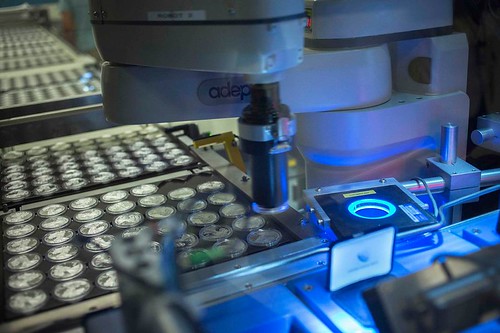
The U.S. Mint has temporarily run out of silver bullion coins after selling 2.3 million coins in the past week and a half.
The surge nearly triples February's sales and is up from 850,000 coins in the same month last year.
West Point, where the coins are minted, is working to produce more coins, according to Mint spokesman Michael White.
Mr. White didn't give a reason for the increase in sales, but it is possible buyers are worried about the new coronavirus.
To read the complete article (subscription required), see:
U.S. Mint Runs Out of Silver Coins as Demand Surges (https://www.wsj.com/livecoverage/coronavirus/card/u4qjZDrkGuuPLxl29J38)
A Bank in Midtown Is Cleaned Out of $100 Bills
This March 14, 2020 New York Times article showed the panic setting in as moneyed people stocked up on cash. -Editor
As the stock market was having its worst day in 30 years on Thursday, customers at a Bank of America branch in Midtown Manhattan, the financial heart of New York, were lining up to take cash out of their accounts — sometimes tens of thousands of dollars at a time.
So many people sought huge sums that the bank branch, at 52nd Street and Park Avenue, temporarily ran out of $100 bills to fulfill large withdrawals, according to three people familiar with the branch's operations. The shortage hit after a rash of requests for as much as $50,000, said two people who witnessed the rush.
The problem was limited to large bills — the bank's A.T.M.s stayed stocked and customers with routine transactions were still able to take out cash. By Friday morning, the bank had refilled its supply of big bills, two of the people said.
But the desire for cash persisted: A teller at a JPMorgan Chase branch across the street said on Friday that there had been a "nonstop" stream of customers stockpiling cash over the past two days.
To read the complete article, see:
A Bank in Midtown Is Cleaned Out of $100 Bills (https://www.nytimes.com/2020/03/14/business/coronavirus-cash-shortage-bank.html)
Peter Huntoon writes:
"I got stuck behind a woman trying to drain her bank account $200 at a crack with her debit card at the teller machine outside our otherwise closed bank yesterday."
Maybe they figured it was cheaper than toilet paper... -Editor
Paper Money Shunned For Fear of Virus
So how's that cash stash working out for ya? Here are a couple articles on fears over paper money. The first one was sent by Howard Berlin. Thanks. -Editor
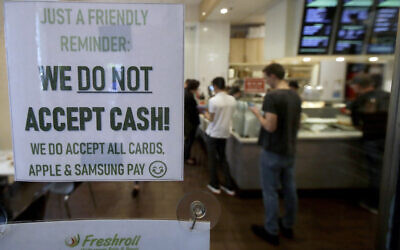
A growing number of businesses and individuals worldwide have stopped using banknotes in fear that physical currency, handled by tens of thousands of people over their useful life, could be a vector for the spreading coronavirus.
Public officials and health experts have said that the risk of transferring the virus person-to-person through the use of banknotes is small. But that has not stopped businesses from refusing to accept currency and some countries from urging their citizens to stop using banknotes altogether.
To read the complete article, see:
Filthy lucre: Paper money shunned for fear of virus spread (https://apnews.com/167186097f44116220b757abebb49be3)
Show us the money -- unless its cash!
That's the sentiment a growing number of businesses around the world have adopted as fear grows over the spread of COVID-19.
Despite assurances from public health officials, some retailers are banning banknotes.
Julie Fischer, a professor at the Center for Global Health Science and Society at Georgetown University, says while there may be traces of the virus lingering on paper bills, it is unlikely virus particles will return to the air, or aerosolize, once on a surface.
Despite the reassurance, some people just aren't ready to risk it.
In South Korea, which has been more successful in stemming the outbreak, the country's central bank took all banknotes out of circulation for two weeks or, in some cases, burned paper money.
The National Bank of Poland said Thursday that "Polish banknotes are subjected to a quarantine" and are therefore safe to use in cash transactions.
To read the complete article, see:
Businesses banning banknotes, asking customers to use credit, debit cards (https://www.foxnews.com/world/businesses-banning-banknotes-asking-customers-to-use-credit-debit-cards)
To read another article, see:
Filthy lucre: Paper money shunned for fear of virus spread (https://www.timesofisrael.com/filthy-lucre-paper-money-shunned-for-fear-of-virus-spread/)
1666 JOHN MORSE COPPER HALFPENNY TOKEN
David Pickup submitted these notes on an interesting 17th century British token. Thanks! -Editor
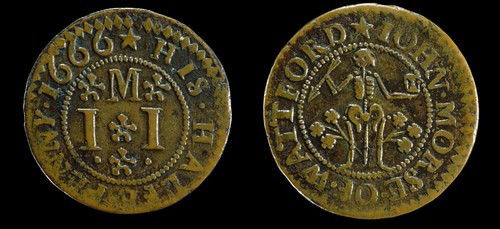
Image from the British Museum Collection
John Morse: Pirates in Watford or a health warning?
Many Seventeenth century tokens feature designs showing the issuer's trade or occupation or heraldry. This is unusual as it shows a skeleton holding an hour glass and an arrow. Why is this?
The simple answer is a pun. The issuer was a man called John Morse which sounds like the word mors which is Latin for death. The reverse side has the initials of the issuer, IM, for John Morse (Iohannes Morse in Latin), with a second I. Usually (if the issuer is a man), the initials include that of his wife, but Morse was widowed, hence the repetition of his initial (Unless his wife's name was Irene or similar!).
There are references to John as a puritan preacher living in Watford. He had some dispute with William Penn, the Quaker who founded Pennsylvania. 1 The use of such a morbid image seems strange for a religious preacher. Although rare on tokens the image was well known in graveyards as you would expect, and also on pirate flags like the skull and crossbones. The addition of an hourglass meant that time was running out and an arrow hinted at violent or sudden death.
This token was issued in 1666 the year of the Great Fire of London and a year after the Great Plague. Watford is less than twenty miles from London and survivors would have moved out to the countryside. Perhaps this token hints at the need to prepare against sudden or violent death. So some tokens come with a health warning.
Reference:
Thomas Clarkson (1814) Memoirs of the Private and Public Life of William Penn Who Settled the State of Pennsylvania, and Founded the City of Philadelphia Philadelphia.
https://books.google.co.uk/books?id=EZo9AAAAYAAJ
LARRY BRILLIANT, NUMISMATIC INTERNET PIONEER
I've met and known a lot of great people in my time on this planet, and it's always nice to hear about an old friend. Here's a timely WIRED article about one such gentleman who is very much in the news these days. -Editor
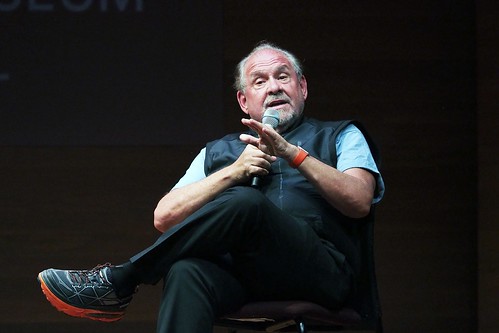
Dr. Larry Brilliant
LARRY BRILLIANT SAYS he doesn't have a crystal ball. But 14 years ago, Brilliant, the epidemiologist who helped eradicate smallpox, spoke to a TED audience and described what the next pandemic would look like. At the time, it sounded almost too horrible to take seriously. "A billion people would get sick," he said. "As many as 165 million people would die. There would be a global recession and depression, and the cost to our economy of $1 to $3 trillion would be far worse for everyone than merely 100 million people dying, because so many more people would lose their jobs and their health care benefits, that the consequences are almost unthinkable."
Now the unthinkable is here, and Brilliant, the Chairman of the board of Ending Pandemics, is sharing expertise with those on the front lines. We are a long way from 100 million deaths due to the novel coronavirus, but it has turned our world upside down. Brilliant is trying not to say "I told you so" too often. But he did tell us so, not only in talks and writings, but as the senior technical advisor for the pandemic horror film Contagion, now a top streaming selection for the homebound. Besides working with the World Health Organization in the effort to end smallpox, Brilliant, who is now 75, has fought flu, polio, and blindness; once led Google's nonprofit wing, Google.org; co-founded the conferencing system the Well; and has traveled with the Grateful Dead.
To read the complete article, see:
The Doctor Who Helped Defeat Smallpox Explains What's Coming (https://www.wired.com/story/coronavirus-interview-larry-brilliant-smallpox-epidemiologist/)
Dr. Brilliant is not only a numismatist and E-Sylum subscriber, he founded one of the earliest numismatic online discussion forums. Back in November, 2001 I wrote about my experience working with him. -Editor
FIRST COIN CHAT ROOM?
On page B1 of the November 8th Wall Street Journal is an article about Dr. Larry Brilliant and his work against smallpox in India. The last paragraph mentions that "he had a role in founding several online and broadband companies". One of those companies had a numismatic connection.
When I worked at Bell Labs in New Jersey during the early 80's, I moonlighted as a consultant for Dr. Brilliant's company, which was based in Ann Arbor, MI at the time. He had hooked up with a couple hackers who ran a bulletin board system on a server in one of their homes. They created an interactive conferencing system with many elements of today's chat rooms and newsgroups. I did testing and commented on user interface design. It was a plain scrolling text interface that you could dial in to via the GTE Telnet network.
The company was initially called MarketNet, Inc., and later Network Technologies Inc., or NETI. Larry was a coin collector and knew dealer Joseph Lepczyk, whom I believe became an investor in the firm. Hoping to unseat the standard coin dealer teletype system, they created a system called CENTS for buying, selling, and discussing numismatic items online. CENTS stood for "Complete Electronic Numismatic Trading Systems." It was through the numismatic connection that I became involved.
The company later had some sales to groups like AT&T's Legal Dept., which used it as groupware to discuss legal documents. But the system was way ahead of its time and failed, because in those days long before the popularization of the Internet, there were still only a handful of first adopters with PCs and modems having the capability to dial in. We geeks thought it was the bee's knees, but it went nowhere. Larry closed the company, but moved to San Francisco and ended up cofounding The Well with Stuart Brand (of Whole Earth Catalog fame), this time creating the first commercially successful online community.
In my library I have copies of the user documentation for the system and a handful of scrolled paper printouts documenting some interactive sessions. In one, Larry Brilliant wrote: "It was a real treat to be able to sign on to the system via satellite from Kathmandu, Nepal. We are making world history with the longest distance coin deal ever ..... wonderful." (August 15th, 1983).
To read the earlier E-Sylum articles, see:
FIRST COIN CHAT ROOM? (https://www.coinbooks.org/esylum_v04n46a09.html)
THE E-SYLUM, NUMISMATISTS AND TECHNOLOGY PIONEERS (https://www.coinbooks.org/esylum_v10n03a06.html)

